| Hüsker Dü: "Warehouse: Songs & Stories" (Warner, Jan. 1987) |
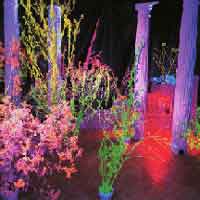 An den Sound der Band musste ich mich erstmal gewöhnen. Als mir
ein Kollege in paar Jahre zuvor "Metal Circus" vorspielte,
war das für mich mitten in meiner Bluesphase nur unhörbarer
Punkrock. Aber Geschmäcker entwickeln sich weiter - genauso wie
Bands. Mit ihrem zweiten Doppelalbum (nach "Zen
Arcade") haben die beiden Sänger/Songschreiber Grant
Hart (Schlagzeuger) und Bob Mould
(Gitarrist) zusammen mit Greg Norton (Bassist und Schnurbartträger)
meines Erachtens ihr Meisterwerk abgeliefert!
An den Sound der Band musste ich mich erstmal gewöhnen. Als mir
ein Kollege in paar Jahre zuvor "Metal Circus" vorspielte,
war das für mich mitten in meiner Bluesphase nur unhörbarer
Punkrock. Aber Geschmäcker entwickeln sich weiter - genauso wie
Bands. Mit ihrem zweiten Doppelalbum (nach "Zen
Arcade") haben die beiden Sänger/Songschreiber Grant
Hart (Schlagzeuger) und Bob Mould
(Gitarrist) zusammen mit Greg Norton (Bassist und Schnurbartträger)
meines Erachtens ihr Meisterwerk abgeliefert!

 Mehr ...
Mehr ...
It's cleaner and more produced than any of their records, which is one reason why many H�sker D� fans have never fully embraced their second double album, Warehouse: Songs and Stories. Granted, Warehouse boasts a fuller production -- complete with multi-tracked guitars and vocal, various percussion techniques, and endless studio effects -- that would have seemed out of place a mere two years before its release. However, Flip Your Wig and Candy Apple Grey both suggested this full-fledged pop production, and it's to H�sker D�'s credit that they never sound like they are selling out with Warehouse. What they do sound like is breaking up. Although there was a schism apparent between Bob Mould and Grant Hart on Candy Apple Grey, they don't even sound like they are writing for the same band on Warehouse. But the individual songs on the album are powerhouses in their own right, as both songwriters exhibit a continuing sense of experimentation -- Hart writes a sea shanty with "She Floated Away" and uses bubbling percussion on "Charity, Chastity, Prudence, and Hope," while Mould nearly arrives at power pop with "Could You Be the One?" and touches on singer/songwriter-styled folk-rock with "No Reservations." Warehouse doesn't have the single-minded sense of purpose or eccentric sprawl of Zen Arcade, but as a collection of songs, it's of the first order. Furthermore, its stylish production -- which makes pop concessions without abandoning a punk ethos -- pointed the way to the kind of "alternative" rock that dominated the mainstream in the early '90s. In all, it was a fine way for one of the most important bands of the '80s to call it a day.
(by Stephen Thomas Erlewine, All Music Guide)
|
| Microdisney: "Crooked Mile" (Virgin, Jan. 1987) |
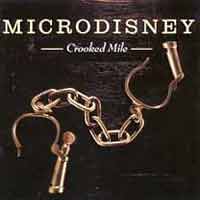 Die Anfang der 80er in Cork/Irland von Sänger Cathal Coughlan
und Gitarrist Sean O'Hagan gegründete Band schaffte es wie
kaum eine andere Popgefühle und Independenthaltung authentisch
zusammenzubringen - und das auch noch in den grauenhaften Untiefen des
übelsten Jahrzehnts der Popmusik (Zeitrechnung seit den 60ern!).
Der große Erfolg blieb aus, auch als die Alben bei einer großen Plattenfirma
herauskamen. Allerdings konnte es mit den beiden nicht lange gut gehen
und sie gingen später getrennte Wege - und waren dabei sogar (etwas)
erfolgreicher: Coughlan mit Fatima Mansions und O'Hagan mit den
High Llamas.
Die Anfang der 80er in Cork/Irland von Sänger Cathal Coughlan
und Gitarrist Sean O'Hagan gegründete Band schaffte es wie
kaum eine andere Popgefühle und Independenthaltung authentisch
zusammenzubringen - und das auch noch in den grauenhaften Untiefen des
übelsten Jahrzehnts der Popmusik (Zeitrechnung seit den 60ern!).
Der große Erfolg blieb aus, auch als die Alben bei einer großen Plattenfirma
herauskamen. Allerdings konnte es mit den beiden nicht lange gut gehen
und sie gingen später getrennte Wege - und waren dabei sogar (etwas)
erfolgreicher: Coughlan mit Fatima Mansions und O'Hagan mit den
High Llamas.
|
| The Golden Palominos: "Blast Of Silence" (Celluloid, Feb. 1987) |
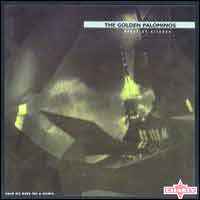 Allstar-Projekt des ehemaligen Trommlers der Feelies,
Anton Fier, zusammen mit Bill Laswell. Hab ich mir damals
gekauft, weil Richard Thompson mit dabei ist. Außerdem Henry
Kaiser, Syd Straw, Michael Stipe (R.E.M.),
Johnny Lydon (P.I.L., Sex Pistols), Jack Bruce, Carla
Bley, Arto Lindsey und viele andere.
Allstar-Projekt des ehemaligen Trommlers der Feelies,
Anton Fier, zusammen mit Bill Laswell. Hab ich mir damals
gekauft, weil Richard Thompson mit dabei ist. Außerdem Henry
Kaiser, Syd Straw, Michael Stipe (R.E.M.),
Johnny Lydon (P.I.L., Sex Pistols), Jack Bruce, Carla
Bley, Arto Lindsey und viele andere.
|
| Nick Drake: "Time Of No Reply" (Hannibal, März 1987) |
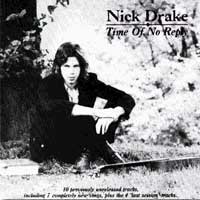 Vier Lieder spielte Nick Drake noch kurz vor seinem Tod 1974 ein, die erstmalig
1979 auf der 3fach-LP-Box FRUIT TREE als Anhang zum dritten
Album "Pink Moon" zu
hören waren, darunter auch "Voice From The Mountain",
eines meiner Lieblingslieder von ihm, oft auf der Setliste von Waiting
For Louise zu finden. Der Rest, inklusive ein paar interessanter
Outtakes aus den Five Leaves Left-Sessions,
ist hier erstmalig zu hören. Besonders erwähnenswert ist eine
frühe Version von "Fly", echtes "Homerecording"
von 1969, und eine alternative Version von den "Thoughts Of Mary
Jane" mit Richard Thompson an der Gitarre. Also kein echtes
"neues" Album, aber ein Muss für Fans dieses wunderbaren
englischen Sängers, Songschreibers und Gitarristen.
Vier Lieder spielte Nick Drake noch kurz vor seinem Tod 1974 ein, die erstmalig
1979 auf der 3fach-LP-Box FRUIT TREE als Anhang zum dritten
Album "Pink Moon" zu
hören waren, darunter auch "Voice From The Mountain",
eines meiner Lieblingslieder von ihm, oft auf der Setliste von Waiting
For Louise zu finden. Der Rest, inklusive ein paar interessanter
Outtakes aus den Five Leaves Left-Sessions,
ist hier erstmalig zu hören. Besonders erwähnenswert ist eine
frühe Version von "Fly", echtes "Homerecording"
von 1969, und eine alternative Version von den "Thoughts Of Mary
Jane" mit Richard Thompson an der Gitarre. Also kein echtes
"neues" Album, aber ein Muss für Fans dieses wunderbaren
englischen Sängers, Songschreibers und Gitarristen.

 Mehr ...
Mehr ...
Released in the mid-'80 during one of the many Drake revivals over the years, combining tracks from the original Fruit Tree box set and other outtakes unreleased until then, Time of No Reply is a fine coda to Drake's all too brief recording career. A collection of outtakes and alternate versions of more familiar songs, it parallels Pink Moon in that all songs but two are simply Drake on his own, his guitar and his voice doing all that needs to be done. The majority of the recordings come from the late '60s, from the slew of sessions and home recordings predating the release of Five Leaves Left. They still show Drake working in a touch more traditional mode, but his unmistakable vocal approach is well in place throughout. The title track itself is a gem, raising the question as to why Drake thought it unworthy for initial release, with a softly catchy chorus and sweet, reflective lyrical cast. The takes on "Man in a Shed" and "The Thoughts of Mary Jane," with Richard Thompson adding electric guitar on the latter, make for an intersting contrast to their more familiar studio incarnations. The release concludes with the "final session," four last songs recorded two years after Pink Moon, shortly before his death. The songs included on Time of No Reply should be considered demos and experiments, but there's no questioning Drake's power for understated exploration of darker moments and emotions remained.
(by Ned Raggett, All Music Guide)
|
| Element Of Crime: "Try To Be Mensch" (Polydor, März 1987) |
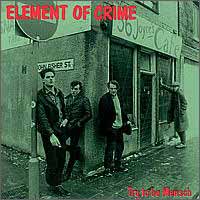 Das zweite, noch englischsprachige Album der Band um den "Bestsellerautor"
Sven Regener, die später eine der wichtigsten heimischen
Bands mit unpeinlichen deutschen Texte werden sollte. Die Musik (schrammeliger
Gitarrenrock mit Trompeteneinlagen) ist hier allerdings schon voll da.
Produziert immerhin vom legendären John Cale, was damals
durchaus einem "Ritterschlag" für eine deutsche Band
gleichkam!
Das zweite, noch englischsprachige Album der Band um den "Bestsellerautor"
Sven Regener, die später eine der wichtigsten heimischen
Bands mit unpeinlichen deutschen Texte werden sollte. Die Musik (schrammeliger
Gitarrenrock mit Trompeteneinlagen) ist hier allerdings schon voll da.
Produziert immerhin vom legendären John Cale, was damals
durchaus einem "Ritterschlag" für eine deutsche Band
gleichkam!
|
| French, Frith, Kaiser, Thompson: "Live, Love, Larf & Loaf" (Rhino, März 1987) |
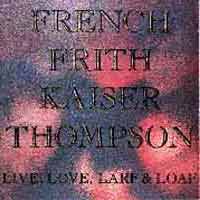 Eine ziemlich irre Truppe, die sich zu diesem Projekt zusammengefunden hatte:
John French war mal Drummer bei Captain
Beefheart. Fred Frith gilt als einer der wichtigsten englischen
Avantgardegitarristen und spielt hier "nur" den Bass. Henry
Kaiser ist einer der bekanntesten amerikanischen Avantgardegitarristen.
Schließlich und endlich mein Held, Richard Thompson, der
zwar eigentlich aus der Folkrockecke stammt (er spielte auf den wegweisenden
Fairport Convention-Alben Unhalfbricking
und Liege & Lief), aber scheinbar
mühelos über den Tellerrand der Folkies gucken kann.
Eine ziemlich irre Truppe, die sich zu diesem Projekt zusammengefunden hatte:
John French war mal Drummer bei Captain
Beefheart. Fred Frith gilt als einer der wichtigsten englischen
Avantgardegitarristen und spielt hier "nur" den Bass. Henry
Kaiser ist einer der bekanntesten amerikanischen Avantgardegitarristen.
Schließlich und endlich mein Held, Richard Thompson, der
zwar eigentlich aus der Folkrockecke stammt (er spielte auf den wegweisenden
Fairport Convention-Alben Unhalfbricking
und Liege & Lief), aber scheinbar
mühelos über den Tellerrand der Folkies gucken kann.
Was für Musik kommt dabei raus? Irgendwie die Quersumme aus allen
vieren und nicht der kleinste gemeinsame Nenner, wobei Thompson und
French singen und es in diesen Momenten noch am ehesten nach einer Thompson-
bzw. Beefheartplatte klingt. Außerdem gibt's ein Lied in der Sprache
der japanischen Insel Okinawa (?) und den Beachboys-Klassiker "Surfin'
USA" (eigentlich von Chuck Berry, aber egal!). Sehr merkwürdig
das Ganze. Und ziemlich gut.
|
| Dolly Parton/Linda Ronstadt/Emmylou Harris: "Trio" (Warner, März 1987) |
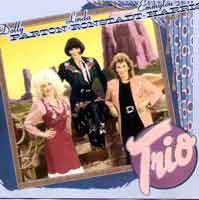 Das Gipfeltreffen der Firstladies des Countryrocks! Solche Veranstaltungen
können natürlich schief gehen, aber hier stimmen das Songmaterial
(u. a. "Telling Me Lies" von Linda Thompson und "My Dear
Companion" von Jean Ritchie), die instrumentale Begleitung (u.a.
durch David Lindley, Albert Lee, Mark O'Connor
und Ry Cooder) - und natürlich vor allem die Gesangsleistung
des Damentrios.
Das Gipfeltreffen der Firstladies des Countryrocks! Solche Veranstaltungen
können natürlich schief gehen, aber hier stimmen das Songmaterial
(u. a. "Telling Me Lies" von Linda Thompson und "My Dear
Companion" von Jean Ritchie), die instrumentale Begleitung (u.a.
durch David Lindley, Albert Lee, Mark O'Connor
und Ry Cooder) - und natürlich vor allem die Gesangsleistung
des Damentrios.
|
| Prince: "Sign 'O' The Times" (Warner/Paisley Park, März 1987) |
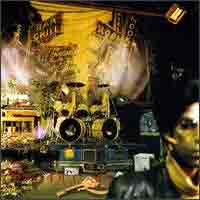 Obwohl ich kein Prince-Fan bin, ist das auch für mich ein wichtiges Album.
Danach habe ich aber wieder komplett das Interesse an seiner Musik verloren.
Obwohl ich kein Prince-Fan bin, ist das auch für mich ein wichtiges Album.
Danach habe ich aber wieder komplett das Interesse an seiner Musik verloren.
|
| World Party: "Private Revolution" (Chrysalis/Ensign, März 1987) |
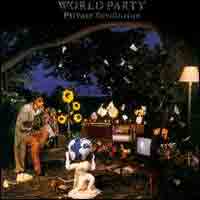 Das fantastische Debüt des Ex-Waterboys
Karl Wallinger unter dem Pseudonym "World Party" macht
deutlich, dass er als Begleiter für Mike Scott verschenkt
war. Endlich konnte er sich nicht nur als Multi-Instrumentalist, sondern
auch als Songschreiber profilieren.
Das fantastische Debüt des Ex-Waterboys
Karl Wallinger unter dem Pseudonym "World Party" macht
deutlich, dass er als Begleiter für Mike Scott verschenkt
war. Endlich konnte er sich nicht nur als Multi-Instrumentalist, sondern
auch als Songschreiber profilieren.
|
| Gene Clark & Carla Olson: "So Rebellious A Lover" (Demon, April 1987) |
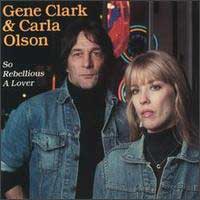 Die Karriere von Gene Clark außerhalb der Byrds
war unter kommerziellen Gesichtspunkten ein Desaster, wobei das nie
an seinen musikalischen Qualitäten lag. Nach dem Ausstieg bei den
Byrds nahm er u. a. 2 Duettplatten
mit dem Banjospieler Doug Dillard auf ("The
Fantastic Expeditions Of Dillard & Clark"), war dadurch
einer der Countryrock-Pioniere, ohne dafür große Anerkennung zu
bekommen. Gelegentliche Versuche einer Solokarriere bei großen Plattenfirmen
lieferten zwar meist wunderschöne Alben (vor allem "White
Light", 1971 für A&M, und das Meisterwerk "No
Other", 1974 bei Elektra/Asylum erschienen), ohne ihm aber
den Durchbruch zu verschaffen. Mitte der 80er war er dann mit einer
nach Einschätzung vieler Leute zweitklassiger Band als "Byrds"
auf Tour, zum ärger von McGuinn, Hillman und Crosby.
Anschließend tat er sich mit Carla Olson, der Sängerin der
Textones, zusammen, um dieses schöne Akustikalbum aufzunehmen,
das deutlich besser war als alles, was er nach "No
Other" aufgenommen hatte. Mit dabei u. a. sein alter Byrd-Gefährte
Chris Hillman mit einem schönen Mandolinensolo (offensichtlich
waren die alten Kollegen dann doch nicht ganz so verärgert!) und
Stephen McCarthy von den Byrds beeinflussten "Long
Ryders" (Nomen Est Omen!). Besonders gut gefällt mir neben
den neuen Clark-Kompositionen vor allem die Coverversion von Gram
Parsons "I'm Your Toy" mit wunderschönen Duettgesang.
Traurigerweise beendete Clark seine Plattenkarriere also mit einem Duettalbum,
denn wenige Jahre später (1991?) verstarb er, wie viele Rock'n'Roller,
viel zu jung.
Die Karriere von Gene Clark außerhalb der Byrds
war unter kommerziellen Gesichtspunkten ein Desaster, wobei das nie
an seinen musikalischen Qualitäten lag. Nach dem Ausstieg bei den
Byrds nahm er u. a. 2 Duettplatten
mit dem Banjospieler Doug Dillard auf ("The
Fantastic Expeditions Of Dillard & Clark"), war dadurch
einer der Countryrock-Pioniere, ohne dafür große Anerkennung zu
bekommen. Gelegentliche Versuche einer Solokarriere bei großen Plattenfirmen
lieferten zwar meist wunderschöne Alben (vor allem "White
Light", 1971 für A&M, und das Meisterwerk "No
Other", 1974 bei Elektra/Asylum erschienen), ohne ihm aber
den Durchbruch zu verschaffen. Mitte der 80er war er dann mit einer
nach Einschätzung vieler Leute zweitklassiger Band als "Byrds"
auf Tour, zum ärger von McGuinn, Hillman und Crosby.
Anschließend tat er sich mit Carla Olson, der Sängerin der
Textones, zusammen, um dieses schöne Akustikalbum aufzunehmen,
das deutlich besser war als alles, was er nach "No
Other" aufgenommen hatte. Mit dabei u. a. sein alter Byrd-Gefährte
Chris Hillman mit einem schönen Mandolinensolo (offensichtlich
waren die alten Kollegen dann doch nicht ganz so verärgert!) und
Stephen McCarthy von den Byrds beeinflussten "Long
Ryders" (Nomen Est Omen!). Besonders gut gefällt mir neben
den neuen Clark-Kompositionen vor allem die Coverversion von Gram
Parsons "I'm Your Toy" mit wunderschönen Duettgesang.
Traurigerweise beendete Clark seine Plattenkarriere also mit einem Duettalbum,
denn wenige Jahre später (1991?) verstarb er, wie viele Rock'n'Roller,
viel zu jung. |
| Meat Puppets: "Mirage" (SST, April 1987) |
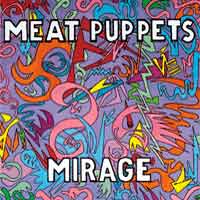 1987 veröffentlichten die Meat Puppets gleich zwei Geniestreiche:
zuerst Mirage und dann wenige Monate später noch Huevos.
Für mich eines der besten Gitarre-Bass-Drums-Trios aller Zeiten!
1987 veröffentlichten die Meat Puppets gleich zwei Geniestreiche:
zuerst Mirage und dann wenige Monate später noch Huevos.
Für mich eines der besten Gitarre-Bass-Drums-Trios aller Zeiten!

 Mehr ...
Mehr ...
|
Drei Monate verweilten sie für dieses Album in Studio und arbeiteten
an diesem hoch-psychedelischen Werk, das im Frühjahr ´87 veröffentlicht
wurde.
(Glitterhouse)
|
|
|
"The Meat Puppets at their psychedelic peak.
A tightly crafted labor of love that took them more than three months
to record, "Mirage" was released in Spring of 1987 to increasing
interest from mainstream rock circles. Writing for the Washington Post,
Joe Sasfy proclamed it "their finest, as close to a polished artistic
arrival as you'd want from a frisky anti-pop band committed to musical
spontaneity and adventure." And in the Los Angeles Reader, Chris
Morris hailed "Mirage" as "rarified rock impressionism
at its heightened best."
(vom Rykodisc-ReIssue)
|
|
|
As many Meat Puppets fans had realized by 1987's Mirage, the trio would change gears and broaden their sound with each successive album. This was never more apparent than on their fourth full-length release. Synthesizers were used to add textures to the tunes, while the drums sounded metronome-perfect, almost as if a drum machine was supplying the patterns. Strangely, although Mirage was the trio's most experimental album, it also turned out to be one of their most psychedelia-based works. The groovy little ditty "Get on Down" turned out to be one of the band's first videos aired on MTV, while the title track, the melodic "Leaves," the country rocker "Confusion Fog," the unrelenting "Beauty," and the album-closing punk freak-out "Liquified" are all standouts.
(by Greg Prato, All Music Guide)
|
|
| The Replacements: "Pleased To Meet Me" (Sire, April 1987) |
|
 Meine erste Begegnung mit einer der besten Bands der 80er. Nicht mehr ganz
so punkig wie in ihren Anfangstagen, aber stattdessen GROSSER POP!
Meine erste Begegnung mit einer der besten Bands der 80er. Nicht mehr ganz
so punkig wie in ihren Anfangstagen, aber stattdessen GROSSER POP!
"Maybe this record is a little more controlled
than some others the band put out, but it rocks, swings and whispers.
All of it good. Including a song for the Big Star himself Alex Chilton.
Two other standouts are "Nightclub Jitters" and "Skyway".
A thoroughly pleasing record from start to finish. Both are soft,
almost gentle in nature. Both front and back covers consist of nice
graphics and design." (TralFaz-Arcives)
|
| The King Of Luxembourg: "Royal Bastard" (él, Mai 1987) |
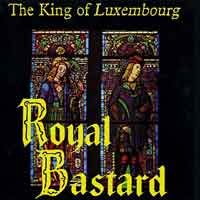 Diese Platte ist inzwischen ein rares Schätzchen. The King Of Luxembourg
ist eines der vielen Pseudonyme, die von Simon Fisher-Turner
verwendet wurden. Er gründete zu Punkrockzeiten mit Matt Johnson
The The und arbeitet heutzutage vor allem als Filmkomponist.
Auf dem englischen Kultlabel él nahm er mit Unterstützung
vieler Gastmusiker unter diesem Pseudonym zwei Alben auf. Auf "Royal
Bastard" bin ich damals gestoßen, weil fast die kompletten Go-Betweens
mitmischen: Robert Forster, Grant McLennan, Amanda
Brown und Lindy Morrison. Als Songschreiber und Keyboarder
ist der in London beheimate Franzose Louis Philippe dabei, der
ebenfalls bei "èl" Platten veröffentlicht. Die
Musik ist mit den Begriffen POP und EXZENTRIK noch am ehesten zu beschreiben,
manchmal erinnert sie ein wenig an PET
SOUNDS (wirklich!). Brian Wilsons aktuelle Begleitband Wondermints
könnte glatt dabei gewesen sein, wären seitdem nicht bereits
15 Jahre vergangen. Auf jeden Fall ist interessant zu vermerken, dass
sowohl Louis Philippe, der König von Luxemburg, als auch die Wondermints
in Japan am erfolgreichsten sind bzw. waren. Die Platte enthält
übrigens viele geschmackvolle bzw. exzentrische Coverversionen:
"A Picture Of Dorian Gray" (Dan Treacy/T.V.Personalities),
"Poptones" (Johnny Lydon's P.I.L.), "Something For Sophia
Loren" (Henry Mancini) und "Happy Together" (The Turtles).
Diese Platte ist inzwischen ein rares Schätzchen. The King Of Luxembourg
ist eines der vielen Pseudonyme, die von Simon Fisher-Turner
verwendet wurden. Er gründete zu Punkrockzeiten mit Matt Johnson
The The und arbeitet heutzutage vor allem als Filmkomponist.
Auf dem englischen Kultlabel él nahm er mit Unterstützung
vieler Gastmusiker unter diesem Pseudonym zwei Alben auf. Auf "Royal
Bastard" bin ich damals gestoßen, weil fast die kompletten Go-Betweens
mitmischen: Robert Forster, Grant McLennan, Amanda
Brown und Lindy Morrison. Als Songschreiber und Keyboarder
ist der in London beheimate Franzose Louis Philippe dabei, der
ebenfalls bei "èl" Platten veröffentlicht. Die
Musik ist mit den Begriffen POP und EXZENTRIK noch am ehesten zu beschreiben,
manchmal erinnert sie ein wenig an PET
SOUNDS (wirklich!). Brian Wilsons aktuelle Begleitband Wondermints
könnte glatt dabei gewesen sein, wären seitdem nicht bereits
15 Jahre vergangen. Auf jeden Fall ist interessant zu vermerken, dass
sowohl Louis Philippe, der König von Luxemburg, als auch die Wondermints
in Japan am erfolgreichsten sind bzw. waren. Die Platte enthält
übrigens viele geschmackvolle bzw. exzentrische Coverversionen:
"A Picture Of Dorian Gray" (Dan Treacy/T.V.Personalities),
"Poptones" (Johnny Lydon's P.I.L.), "Something For Sophia
Loren" (Henry Mancini) und "Happy Together" (The Turtles).
|
| Suzanne Vega: "Solitude Standing" (A&M, Mai 1987) |
 Auch mit ihrem zweiten Album ist die Dame wieder sehr erfolgreich. Ebenso
mit der Single "Luka" (die dann später von Evan Dando
und seinen Lemonheads verwurstet wird).
Zu ihrem allergrößten Hit wird dann aber drei Jahre später
"Tom's Diner" in der Remix-Version von einem gewissen D.N.A.,
der unter das unscheinbare á-capella-Lied einfach einen Beat
legt: fertig ist der Hit!
Auch mit ihrem zweiten Album ist die Dame wieder sehr erfolgreich. Ebenso
mit der Single "Luka" (die dann später von Evan Dando
und seinen Lemonheads verwurstet wird).
Zu ihrem allergrößten Hit wird dann aber drei Jahre später
"Tom's Diner" in der Remix-Version von einem gewissen D.N.A.,
der unter das unscheinbare á-capella-Lied einfach einen Beat
legt: fertig ist der Hit!
|
| Marianne Faithful: "Strange Weather" (Island, Juli 1987) |
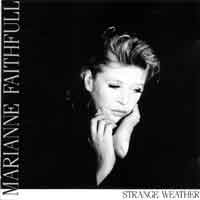 Welch ein grandioses Comebackalbum! 4 Jahre nach dem etwas untergegangenem
Album "A Child's Adventure" und fast 10 Jahre nach dem beeindruckenden
"Broken English" schafft
diese Frau zusammen mit dem Jazzproduzenten Hal Willner ein neues
Meisterwerk. Dabei spielen drei wichtige Zutaten eine Rolle: als erstes
natürlich die einzigartige Stimme von "der Faithful"
(ja, so spricht man über echte Diven!), dann die musikalische Arbeit
von Hal Willner und seinen Musikern (u. a. Jazzgitarrist Bill Frisell,
Garth Hudson von The Band
am Akkordeon, Bassist Fernando Saunders von der Lou Reed-Band
und Dr. John bzw. Sharon Freeman am Piano), aber zum dritten
auch die sehr geschmackvolle Songauswahl: neben Klassikern aus den 30ern
hören wir alten Folkblues ("Sign Of Judgement" von Kid
Prince Moore mit tollem Dobro von Frisell), "I'll Keep It With
Mine" von Bob Dylan (eigentlich von Dylan für Nico
geschrieben und auf deren Debütalbum "Chelsea
Girl" zu finden) , ein Remake ihres eigenen Hits "As Tears
Go By", den Jagger/Richards für sie geschrieben hatten,
sowie den Titelsong, den Tom Waits extra für dieses Album
geschrieben hat.
Welch ein grandioses Comebackalbum! 4 Jahre nach dem etwas untergegangenem
Album "A Child's Adventure" und fast 10 Jahre nach dem beeindruckenden
"Broken English" schafft
diese Frau zusammen mit dem Jazzproduzenten Hal Willner ein neues
Meisterwerk. Dabei spielen drei wichtige Zutaten eine Rolle: als erstes
natürlich die einzigartige Stimme von "der Faithful"
(ja, so spricht man über echte Diven!), dann die musikalische Arbeit
von Hal Willner und seinen Musikern (u. a. Jazzgitarrist Bill Frisell,
Garth Hudson von The Band
am Akkordeon, Bassist Fernando Saunders von der Lou Reed-Band
und Dr. John bzw. Sharon Freeman am Piano), aber zum dritten
auch die sehr geschmackvolle Songauswahl: neben Klassikern aus den 30ern
hören wir alten Folkblues ("Sign Of Judgement" von Kid
Prince Moore mit tollem Dobro von Frisell), "I'll Keep It With
Mine" von Bob Dylan (eigentlich von Dylan für Nico
geschrieben und auf deren Debütalbum "Chelsea
Girl" zu finden) , ein Remake ihres eigenen Hits "As Tears
Go By", den Jagger/Richards für sie geschrieben hatten,
sowie den Titelsong, den Tom Waits extra für dieses Album
geschrieben hat. |
| The Go-Betweens: "Tallulah" (Beggars Banquet, Juni 1987) |
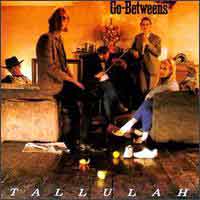 Mein Einstieg in die Welt der Go-Betweens war ein Fernsehauftritt im Frühjahr
87: Sonntag morgen in der ARD, die Sendung hieß glaube ich "Kaffee
Oder Tee" (oder so ähnlich). Die Woche darauf habe ich mir
die Maxi "Right Here" gekauft und es war um mich geschehen.
Die zweite Maxi "Cut It Out" war dann ein recht merkwürdiges
Discostück. Aber dann - endlich - erschien das Album "Tallulah",
bis heute eine meiner Lieblingsplatten. In den folgenden Monaten habe
ich mir dann alle anderen verfügbaren Platten von Robert Forster,
Grant McLennan und Co. besorgt. Erstaunlich, was bis dahin an
mir alles vorbeigegangen war! Mein Lieblingslied der Platte:
"The Clarke Sisters",
gerne auch mit W4L gespielt.
Mein Einstieg in die Welt der Go-Betweens war ein Fernsehauftritt im Frühjahr
87: Sonntag morgen in der ARD, die Sendung hieß glaube ich "Kaffee
Oder Tee" (oder so ähnlich). Die Woche darauf habe ich mir
die Maxi "Right Here" gekauft und es war um mich geschehen.
Die zweite Maxi "Cut It Out" war dann ein recht merkwürdiges
Discostück. Aber dann - endlich - erschien das Album "Tallulah",
bis heute eine meiner Lieblingsplatten. In den folgenden Monaten habe
ich mir dann alle anderen verfügbaren Platten von Robert Forster,
Grant McLennan und Co. besorgt. Erstaunlich, was bis dahin an
mir alles vorbeigegangen war! Mein Lieblingslied der Platte:
"The Clarke Sisters",
gerne auch mit W4L gespielt.

 Mehr ...
Mehr ...
Tallulah, the Go-Betweens fifth album, was supposed to be the band's
breakthrough recording in America. That said, its sound is nearly a full-on
break with the edginess that began to fade on 1986's Liberty Belle and
the Black Diamond Express. More lush, rounded, polished, it sounds like
a record made in the mid-'80s thanks in large part to Lindy Morrison's
use of drum programs in addition to her trap kit. Add to this the contributions
of new member Amanda Brown on violin, oboe, and backing vocals and one
has a revamped band. Fans didn't take to the new sound with kindness initially,
but the songwriting of Forster and McLennan was so much more focused and
taut, it more than compensates for production errors. Nowhere is this
more evident than "Right Now," the album's opener. The multi-tracked
violins drive the center of the tune sprightly, in an off-rail, cut-time
tempo. Robert Vickers' colorful keyboards and Morrison's programming are
truly adornments, but McLennan's soulful yet philosophical vocal anchors
the tune on bedrock and is supported by a beautiful chorus of backing
vocals led by Brown. "You Tell Me," sung by Forster, leads with
distorted guitars held in check by the sweetness of the melody and Morrison's
meld of trap and synthetic drumming. Once more, keyboards counter the
guitars as Vickers accents the beat pushing Forster and the wafting backing
vocals deeper inside lyric and melody. McLennan's "Someone Else's
Wife," is, by contrasts, stark, dark, and suffocating with moody
strings accenting the protagonist's plight. The driving "Cure-ish"
riff that kicks off Forster's "I Just Get Caught Out," is nearly
transcendent; its pained verses are juxtaposed against backing vocalists
filling the refrain with a cheery ba-ba-ba-ba-bum. The nearly funky organ
and bass swirl of "Cut It Out," is unlike any Go-Betweens song
before or since. The beautiful cello and violin section that fuels "The
House That Jack Kerouac Built," with a shimmering rhythm guitar line,
is the perfect maelstrom for Forster's gorgeous images of stolen illicit
love in a dodgy cinema and are topped only by his desperate delivery.
This recording may not have had fans of the band swooning at the time,
but despite its production it has aged exceptionally well although it
remains a product firmly of its time. The raw emotion, vulnerable tenderness
and romantic desperation in its songs, textured by the blend of strings
and keyboards, adds depth and dimension to this well of fine songs.
(by Thom Jurek, All Music Guide)
|
| Warren Zevon: "Sentimental Hygiene" (Virgin, Juni 1987) |
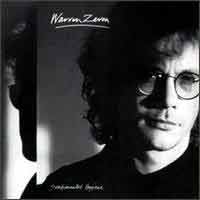 Mal wieder ein wunderbares Album von L.A.'s bestem singenden Zyniker neben
Randy Newman. Dieses mal sind vor allem die Begleiter erwähnenswert:
Bill Berry, Mike Mills und Peter Buck von R.E.M.,
unterstützt u. a. von Neil Young, Bob Dylan (ein
seltener Gast auf den Platten anderer Leute!) , David Lindley,
Michael Stipe, Jennifer Warnes, Don Henley (Eagles)
und Brian Setzer (Stray Cats). Trotz der ganzen Superstars bleibt
Warren mit seiner Stimme und seinen Songs klar Chef im Ring. Mit den
drei R.E.M.-Musikern spielte er dann 1990 unter dem merkwürdigen
Namen Hindu Love Gods noch eine genauso merkwürdige
Blues(!)-Platte ein.
Mal wieder ein wunderbares Album von L.A.'s bestem singenden Zyniker neben
Randy Newman. Dieses mal sind vor allem die Begleiter erwähnenswert:
Bill Berry, Mike Mills und Peter Buck von R.E.M.,
unterstützt u. a. von Neil Young, Bob Dylan (ein
seltener Gast auf den Platten anderer Leute!) , David Lindley,
Michael Stipe, Jennifer Warnes, Don Henley (Eagles)
und Brian Setzer (Stray Cats). Trotz der ganzen Superstars bleibt
Warren mit seiner Stimme und seinen Songs klar Chef im Ring. Mit den
drei R.E.M.-Musikern spielte er dann 1990 unter dem merkwürdigen
Namen Hindu Love Gods noch eine genauso merkwürdige
Blues(!)-Platte ein. |
| Sonic Youth: "Sister" (Blast First, Juni 1987) |
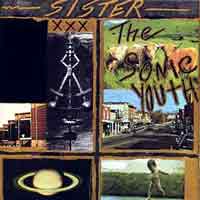 Der Vorläufer zum genialen Daydream Nation!
Der Vorläufer zum genialen Daydream Nation!

 Mehr ...
Mehr ...
|
"When Sonic Youth's Thurston Moore was interviewed
on The South Bank Show's dorky Noise Of New York special back in the late
1980s, he was asked why he thought there was so much interest in the new
wave of American rock bands. ''Because we single-handedly blew the concept
of the non-guitar-based future of rock'n'roll out the window,'' he spat.
Damn right. On 1987s Sister, this NY quartet took the caveman aesthetic
of garage punk and jump started it with alternative guitar tunings, bursts
of white noise, plenty of freely improvised blurt and some timelessly
beautiful songs. They were the first group to really articulate the common
aesthetic that linked such outsider strains as free jazz, modern avant
garde composition and hardcore; it was all, according to Moore, about
breaking out and freaking with it, so to speak. And although your average
dope still opts for the Daydream Nation double LP as Sonic Youth's creative
pinnacle, Sister is the one that'll ruin your record-buying habits for
life. One blast of this sucker and Travis will never quite do it for you
again. All the now-classic Sonic elements are present; aggressively cranked
guitar lends Catholic Block an almost locomotive intensity while the hallucinogenic
Beauty Lies sounds like a dream beaming across centuries. But it is the
rockers that define the set, especially the euphorically raging White
Kross. The greatest rock'n'roll record of the 1980s."
|
|
| Dinosaur Jr.: "You're Living All Over Me" (SST, Juli 1987) |
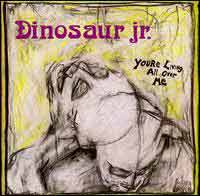 Nach dem schon sehr schönen Debüt
jetzt der Durchbruch von J Mascis und seinen beiden Begleitern
- endlich bei SST, dem angesagtesten Label der Saison!
Nach dem schon sehr schönen Debüt
jetzt der Durchbruch von J Mascis und seinen beiden Begleitern
- endlich bei SST, dem angesagtesten Label der Saison! |
| Dumptruck: "For The Country" (Big Time, Juli 1987) |
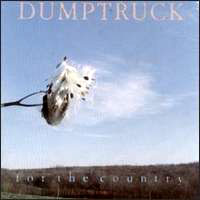 Lost & Found!
Lost & Found!
(Juli 2006)

 Mehr ...
Mehr ...
|
It's the classic rock & roll story: a talented and scrappy band gradually
emerges from a fertile local scene, gets its act thoroughly together over
the course of three steadily improving albums, and just as it's ready
to make its mark on the wider world, it falls apart. Dumptruck's third
album, For the Country, was its last; the core duo of Seth Tiven and Kirk
Swan had split up with Swan's departure, and legal troubles would sink
the band for good shortly after the album's release. There are harbingers
of doom in Tiven's downcast lyrics, but these are his strongest and most
well-crafted songs yet; "Island," the faintly Memphis-flavored
"Hung Out on a Line," and the country-rock jangle of "Wire"
all pack a serious wallop, and the band manages to make good use of Welsh
producer Hugh Jones' state-of-the-art studio without coming across as
slick or overprocessed. The occasional touches of Hammond organ and pedal
steel guitar (that's the legendary B.J. Cole on steel, by the way) give
Dumptruck's sound just the right added dimension on songs like "Wire,"
"Island," and the fine title track. As is the case with most
bands that have followed Dumptruck's trajectory, the last album is the
best place to start; then work backward to D Is for Dumptruck. Highly
recommended.
(by Rick Anderson, All
Music Guide)
|
|
| The Grateful Dead: "In The Dark" (Arista, Juli 1987) |
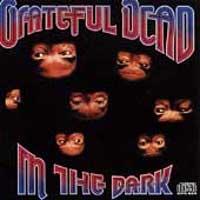 Da hat mein Herz als alter Deadhead gelacht: nach 7 Jahren Unterbrechung
endlich wieder ein Studioalbum mit neuem Songmaterial - und dann auch
noch wirklich gutes: vor allem "Black
Muddy River", einer meiner absoluter Jerry Garcia/Robert
Hunter-Favouriten, deshalb auch von Waiting For Louise auf "From
6 To 5" gecovert. Dann noch die Hitsingle "Touch Of Grey",
tatsächlich bis auf Platz 9 der US-Singlecharts (das Album kam
sogar bis auf Platz 6!). Zwei gute Bob Weir Songs ("Hell
In A Bucket" und der Livekracher "Throwing Stones").
Nur der Gesangsauftritt des Keyboarders Brent Mydland ("Tons
Of Steel") ist stimmlich gewöhnungsbedürftig und vom
Sound zu sehr Mainstream.
Da hat mein Herz als alter Deadhead gelacht: nach 7 Jahren Unterbrechung
endlich wieder ein Studioalbum mit neuem Songmaterial - und dann auch
noch wirklich gutes: vor allem "Black
Muddy River", einer meiner absoluter Jerry Garcia/Robert
Hunter-Favouriten, deshalb auch von Waiting For Louise auf "From
6 To 5" gecovert. Dann noch die Hitsingle "Touch Of Grey",
tatsächlich bis auf Platz 9 der US-Singlecharts (das Album kam
sogar bis auf Platz 6!). Zwei gute Bob Weir Songs ("Hell
In A Bucket" und der Livekracher "Throwing Stones").
Nur der Gesangsauftritt des Keyboarders Brent Mydland ("Tons
Of Steel") ist stimmlich gewöhnungsbedürftig und vom
Sound zu sehr Mainstream.

 Mehr ...
Mehr ...
The Grateful Dead's last lineup returned intact for In the Dark, an album that ironically thrust the band back into the spotlight on the strength of the band's lone Top 40 single, "Touch of Grey." Fans had long mused that the Dead's studio albums lacked the easygoing energy and natural flow of their live performances, and In the Dark does come close to capturing that lightning in a bottle. Jerry Garcia, who apparently had to relearn the guitar after a near-fatal illness, approaches his instrument recharged, while his voice (a beneficiary of the extended hiatus?) shows some of its original smoothness. Of his four songwriting collaborations with long-standing lyricist Robert Hunter, "Touch of Grey" is far and away the best. "When Push Comes to Shove" and "West L.A. Fadeaway" use familiar blues-based riffs that lack the pair's often-contagious chemistry, and "Black Muddy River" has one foot firmly stuck in mawkish MOR terrain (although Garcia can be dealt a free pass here in light of the song's real-life implications as an attempt to make his peace with the world). What pushes In the Dark past the band's also-rans are two terrific songs from Bob Weir and John Barlow, the cheerfully cranky "Hell in a Bucket" (co-written with Brent Mydland) and the cautionary tale "Throwing Stones." Rarely have Weir's songs sounded so effortless; punctuated by Garcia's guitar, they have more in common with the upbeat, flavorful sound of past Garcia/Hunter compositions than the pair's own work this time out (a rare case of role reversal). In the middle of it all is a country-rock song from Mydland, "Tons of Steel," that sounds oddly out of place. Although the album is unmistakable as the work of the Dead, much of it recalls the punchy, pungent production of Dire Straits' recent work. It's not the second coming of the Dead, but a more entertaining epilogue you couldn't ask for.
(by Dave Connolly, All Music Guide)
|
| Charlie Haden: "Quartet West" (Verve, Juli 1987) |
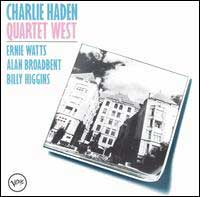 Eigentlich sind die 80er nach meiner Meinung nicht die beste Zeit für
guten, akustischen, also "klassischen" Jazz in Quartettbesetzung.
Es hat auch 10 Jahre gedauert, bis ich diese CD entdeckt und zu schätzen
gelernt habe...
Eigentlich sind die 80er nach meiner Meinung nicht die beste Zeit für
guten, akustischen, also "klassischen" Jazz in Quartettbesetzung.
Es hat auch 10 Jahre gedauert, bis ich diese CD entdeckt und zu schätzen
gelernt habe...

 Mehr ...
Mehr ...
|
Charlie Haden's Quartet West launched the ensemble that would become
his most popular grouping throughout the '80s and '90s. Haden, who had
made a name for himself as an avant-garde bassist in Ornette Coleman's
band and elsewhere, including the influential Liberation Music Orchestra,
returned to a bop-influenced, more mainstream sound with this grouping.
While the album may not be stretching many boundaries stylistically, this
format does little to dilute Haden's impressive performances, and his
love for this material is made obvious with his intricate arrangements,
especially on the two Ornette Coleman tunes, "The Good Life"
and "The Blessing." ("The Blessing" appears as one
of two bonus tracks on the CD version, with the other being Billy Strayhorn's
"Passion Flower.") "The Good Life," in particular,
is infused with energy, and is a showcase for some nimble, joyous, effortless
playing by pianist Alan Broadbent. Haden has three originals here, the
strongest of which, "In the Moment," shows off some of the rhythmic
complexity that he has displayed in his previous work. Perhaps the true
highlight of the album, though, is a version of Charlie Parker's "Passport"
that brings together the whole band in one exuberant expression of energy.
(by Stacia Proefrock, AMG)
|
|
| Emmylou Harris: "Angel Band" (Warner, Juli 1987) |
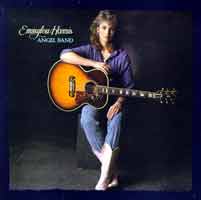 Wie bei vielen meiner langjährigen Lieblingskünstler sind
die 80er qualitativ eher durchwachsen, aber mit "Angel Band"
gelingt Emmylou wieder mal ein Klassealbum. Die Begleitband (Emory
Gordy am Bass, Vince Gill an Gitarre und Mandoline, Carl
Jackson meist am Banjo) spielt fast puren Bluegrass, gelegentlich
von Gaststars wie Multiinstrumentalist Mark O'Connor und den
Dobrospielern Mike Auldridge und Jerry Douglas unterstützt.
Das Songmaterial ist meist alt: Folksongs, Gospel und Stücke der
Stanley-Brothers und anderer Altvorderen. Alles in allem sehr gelungen.
Wie bei vielen meiner langjährigen Lieblingskünstler sind
die 80er qualitativ eher durchwachsen, aber mit "Angel Band"
gelingt Emmylou wieder mal ein Klassealbum. Die Begleitband (Emory
Gordy am Bass, Vince Gill an Gitarre und Mandoline, Carl
Jackson meist am Banjo) spielt fast puren Bluegrass, gelegentlich
von Gaststars wie Multiinstrumentalist Mark O'Connor und den
Dobrospielern Mike Auldridge und Jerry Douglas unterstützt.
Das Songmaterial ist meist alt: Folksongs, Gospel und Stücke der
Stanley-Brothers und anderer Altvorderen. Alles in allem sehr gelungen. |
| Spacemen 3: "The Perfect Prescription" (Glass, Aug. 1987) |
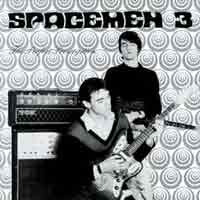 "Taking drugs to make music to take drugs to" - so
nennen Spacemen 3 ihre eigene Arbeitsweise - aber vergnüglich hören
kann man das Ganze auch völlig nüchtern: so ging's mir auch
schon immer bei Hawkwind!
"Taking drugs to make music to take drugs to" - so
nennen Spacemen 3 ihre eigene Arbeitsweise - aber vergnüglich hören
kann man das Ganze auch völlig nüchtern: so ging's mir auch
schon immer bei Hawkwind!

 Mehr ...
Mehr ...
|
"Taking drugs to make music to take drugs to"
was how Rugby's Spacemen 3 famously described their modus operandi. Indeed,
their music referenced all of the greatest psychedelic moments in rock
history, from narcotic blues through MC5-styled sonic attack and yet managed
to sound like no-one else before or since. The group was formed by Jason
Pierce, who went on to found Spiritualized, and Peter Kember, aka Sonic
Boom. Perfect Prescription was their second album and when it came out
on Glass in 1987 nobody really paid it any attention. Anyone who remembers
the UK music scene of the mid-1980s will recall what a resolutely un-rocking
time it was, and the very thought of gargantuan feedback laden riffs was
just too greasy for your average consumer. Yet, from this distance Perfect
Prescription sounds absolutely classic. Walkin' With Jesus is one of the
most ecstatic drug songs ever, with two chords beautifully sounding the
way to nirvana. It fades into Ode To Street Hassle, a lush string-driven
homage to Lou Reed before ascending into the heavenly orchestras of Transparent
Radiation. The second side is earthier, all detuned blues and alien riffs,
but every bit as psychoactively stimulating. They made another couple
of albums after this but the two collaborators were becoming increasingly
distant, at the end working separately on their songs like Lennon and
McCartney. They've both gone on to do great things but they've never yet
come close to replicating this kind of magic
|
|
| R.E.M.: "Document" (I.R.S., Sept. 1987) |
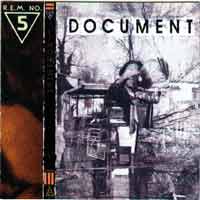 Der Durchbruch von Michael Stipe, Peter Buck, Mike Mills
und Bill Berry mit dem Top-Ten-Hit "The One I Love".
Weitere Smashhits: "Finest Worksong" und "It's The End
Of The World As We Know It (And I Feel Fine)". Danach ging es weg
von I.R.S. hin zu Warner und die Weltkarriere begann.
Der Durchbruch von Michael Stipe, Peter Buck, Mike Mills
und Bill Berry mit dem Top-Ten-Hit "The One I Love".
Weitere Smashhits: "Finest Worksong" und "It's The End
Of The World As We Know It (And I Feel Fine)". Danach ging es weg
von I.R.S. hin zu Warner und die Weltkarriere begann. |
| Miracle Legion: "Surprise Surprise Surprise" (Rough Trade, Sept. 1987) |
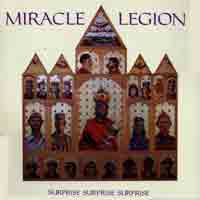 Eine wunderbare Band aus Neuengland, die damals oft mit R.E.M. verglichen
wurde und vielleicht auch deren Potential hatte. Sänger Mark
Mulcahy und Gitarrist Ray Neal arbeiteten im Duo und mit
wechselnden Rhythmusgruppen, durften 1992 sogar ein Album beim Major
Polydor veröffentlichen, schafften aber nie den großen Durchbruch.
"Surprise" erschien beim damals hippen Label "Rough Trade"
und war meine erste Begegnung mit der Band. Ich erinnere mich noch an
einen genialen Duoauftritt der beiden Hauptprotagonisten ca. 1990 im
Vorprogramm der ebenfalls genialen Pere
Ubu in der Bochumer Zeche! Nach meinem Wissensstand sind sie in
ihrer Heimatbasis Neuengland auch heute noch (oder wieder?) aktiv.
Eine wunderbare Band aus Neuengland, die damals oft mit R.E.M. verglichen
wurde und vielleicht auch deren Potential hatte. Sänger Mark
Mulcahy und Gitarrist Ray Neal arbeiteten im Duo und mit
wechselnden Rhythmusgruppen, durften 1992 sogar ein Album beim Major
Polydor veröffentlichen, schafften aber nie den großen Durchbruch.
"Surprise" erschien beim damals hippen Label "Rough Trade"
und war meine erste Begegnung mit der Band. Ich erinnere mich noch an
einen genialen Duoauftritt der beiden Hauptprotagonisten ca. 1990 im
Vorprogramm der ebenfalls genialen Pere
Ubu in der Bochumer Zeche! Nach meinem Wissensstand sind sie in
ihrer Heimatbasis Neuengland auch heute noch (oder wieder?) aktiv.

 Mehr ...
Mehr ...
Three years after the debut EP, Miracle Legion had finessed their very R.E.M.-like sound into something a little more their own. "All for the Best" and "Everyone in Heaven" (with vocals by Kevin Hunter of Wire Train) are both literally remakes of the engaging "The Backyard," the band's first jangly signature song. Overall, this record is darker in tone, and save for Neal Ray's studied version of the Peter Buck guitar style, there are few traces of the Athens sound here.
(by Denise Sullivan, All Music Guide)
|
| Comebuckley (BOY, Okt. 1987) |
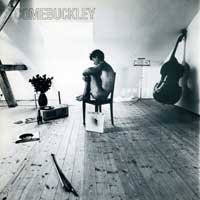 Rares Teil - und soweit ich weiß immer noch nicht auf CD wiederveröffentlichte
EP (so nannte man damals Vinylplatten die länger als Maxisingles,
aber kürzer als LPs sind) dieser Schweizer Band, die sich der Musik
von Tim Buckley verschrieben hat. In einer jazzigen Besetzung
mit mir durchweg unbekannten Musikern (Schlagzeuger, 2 E/A-Bassisten,
Keyboarder, Saxofonist, Sänger/Gitarrist und Sologitarrist) werden
6 Buckley-Kompositionen interpretiert:
Rares Teil - und soweit ich weiß immer noch nicht auf CD wiederveröffentlichte
EP (so nannte man damals Vinylplatten die länger als Maxisingles,
aber kürzer als LPs sind) dieser Schweizer Band, die sich der Musik
von Tim Buckley verschrieben hat. In einer jazzigen Besetzung
mit mir durchweg unbekannten Musikern (Schlagzeuger, 2 E/A-Bassisten,
Keyboarder, Saxofonist, Sänger/Gitarrist und Sologitarrist) werden
6 Buckley-Kompositionen interpretiert:

 Mehr ...
Mehr ...
|
"We do this homage to Tim Buckley because he knew like no one else
how to express and evoke ambiguous human emotions with his vocal art that
affects the ear and gets under your skin. Tim Buckley's enthusiasm gave
us the handle to a door that we like to open up for your discovering an
important part of his lifework. With this tribute we try to bestow the
esteem on Buckley's music which it deserves today." (Linernotes)
|
|
| The Gun Club: "Mother Juno" (Red Rhino, Okt. 1987) |
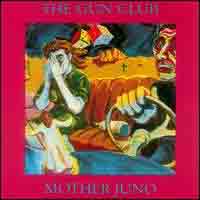 Ganz klar ein Comeback der besseren Art!
Ganz klar ein Comeback der besseren Art!

 Mehr ...
Mehr ...
|
"Led by the late Jeffrey Lee Pierce, and at
various times featuring post-punk luminaries like Patricia Morrison (The
Sisters of Mercy) and Kid Congo Powers (The Cramps), The Gun Club perfected
a style of music that can only be termed "punkabilly blues."
Formed in Los Angeles in the early '80s, the band were vaguely aligned
with similarly roots inspired groups like X and the Blasters, but later
picked up and relocated to the Lower Eastside, resting more comfortably
around the New York, downtown set and Pierce's mentors, Blondie's Debbie
Harry and Chris Stein. A series of influential releases established The
Gun Club as one of the underground's most important groups.
Mother Juno, first released in 1987, was a triumphant comeback
LP for the group after several years of inactivity. Mother Juno earned
the band their widest following to date and featured in many critics'
polls of the best albums of the year." (Buddah Re-Release)
|
|
| Meat Puppets: "Huevos" (SST, Okt. 1987) |
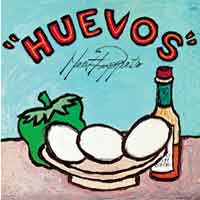 Ein Zufallsentdeckung wegen des schönen Covers. Bald danach meine
Lieblings-SST-Band. Vielleicht sogar mein Lieblings-Gitarrentrio überhaupt.
Ein Zufallsentdeckung wegen des schönen Covers. Bald danach meine
Lieblings-SST-Band. Vielleicht sogar mein Lieblings-Gitarrentrio überhaupt.

 Mehr ...
Mehr ...
|
“Huevos” erschien 1987 nur ein paar Monate nach dem eher experimentellen
“Mirage”. Gitarrist Kurt Kirkwood war seit seiner Kindheit ein
Fan von Z.Z. Top und Einflüße der bärtigen Texaner mischen
sich hier mit den typischen, Meat Puppet´schen Unwägbarkeiten
zu einem der straightesten Alben des Trios.
(Glitterhouse)
|
|
|
"Hard driving riff rock, Meat Puppets style.
"Huevos" was recorded in four days and released less than six
months after "Mirage". But where that album was spacey and lush,
"Huevos" is rough and spontaneous. Writing for the Village Voice,Howard
Hampton declared it to be "steeped in bliss", while in the the
Los Angeles Times,Gina Arnold called it "the band's best effort yet"."
(vom Rykodisc - ReRelease)
|
|
|
"From out of the scrub brush on the edge of the desert comes a trio
who were making their brand of music well before alt-country and Americana
were the new thing to come down the pike. Don't get me wrong, I love the
alt-America stuff, but there is something right and real about the Puppets
and the songs they sing. This record is a bit more mellow than I remembered
the first time around, but that in no way reduces the amount of pleasure
to be gotten from a few repeated listenings. The cover art appears to
be painted in thick layers in a slightly southwestern palette. Hey, any
cover with a bottle of Tobasco on it is welcome at my table, any meal
of the day."
(Tralfaz-Archive)
|
|
|
Recorded and released just a few months after the experimental Mirage, 1987's Huevos was a return to the Meat Puppets' earlier, more straight-ahead direction. The band (guitarist/singer Curt Kirkwood in particular) had always voiced their admiration of ZZ Top, and Huevos contained Billy Gibbons & Co.'s influence more than any other Puppets release. But don't be misled � it wasn't a ripoff, the trio simply incorporated ZZ's sound into their energetic, unpredictable rock. It also didn't hurt that Huevos contained the band's best set of songs since 1985's classic Up on the Sun, comprised almost entirely of heavy rockers ("Paradise," "Look at the Rain," "Crazy," "Fruit," "Automatic Mojo," "Dry Rain," etc.). Another major improvement of Huevos over Mirage was that Derrick Bostrom's drums no longer sounded metronome-perfect and robotic, giving the performances a much livelier edge. The bonus tracks included on the '99 Ryko reissue included several demos of Huevos tunes, including a lengthier and much more laid-back version of "Sexy Music," as well as a medley of "I Can't Be Counted On" and Jimmy Reed's "Baby What You Want Me to Do."
(by Greg Prato, All Music Guide)
|
|
| Pixies: "Come On Pilgrim" (4AD, Okt. 1987) |
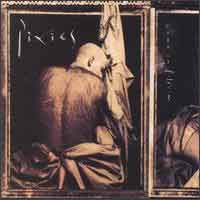 Herbst '87 betrat ich völlig unvorbereitet Lothar Kochs Plattenladen in
Wesel (den es immer noch gibt!), als dort diese EP lief: einen solchen
Sound hatte ich noch nie gehört! Die Band um den Sänger, Gitarristen
und Songschreiber Black Francis (der sich später Frank
Black nannte und in Wahrheit noch ganz anders heißt) und die Bassistin
Kim Deal (später mit den Breeders erfolgreich) brachte
auf geniale Art Krach und Melodie zusammen. Angeblich waren sie das
große Vorbild von Kurt Cobain, sodass es Nirvana ohne die Pixies
vielleicht nie gegeben hätte. Herrn Black ist das soweit ich weiß
scheißegal, obwohl er sicherlich zu einer Karriere à la Nirvana
nicht nein gesagt hätte.
Herbst '87 betrat ich völlig unvorbereitet Lothar Kochs Plattenladen in
Wesel (den es immer noch gibt!), als dort diese EP lief: einen solchen
Sound hatte ich noch nie gehört! Die Band um den Sänger, Gitarristen
und Songschreiber Black Francis (der sich später Frank
Black nannte und in Wahrheit noch ganz anders heißt) und die Bassistin
Kim Deal (später mit den Breeders erfolgreich) brachte
auf geniale Art Krach und Melodie zusammen. Angeblich waren sie das
große Vorbild von Kurt Cobain, sodass es Nirvana ohne die Pixies
vielleicht nie gegeben hätte. Herrn Black ist das soweit ich weiß
scheißegal, obwohl er sicherlich zu einer Karriere à la Nirvana
nicht nein gesagt hätte.
(ca. 2001) |
| Robbie Robertson (Geffen, Okt. 1987) |
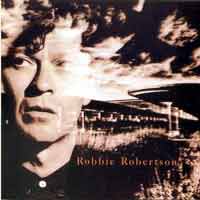 Ich kann mich noch gut erinnern, wie Alan Bangs damals im Niteflight
fast die ganze Platte gespielt hat: ich war total begeistert. Leider
kam danach nicht mehr viel (nur noch das Album "Storeyville").
Damals dachte ich: "Meisterwerk", aber irgendwie hat sich
meine Einschätzung allgemein nicht durchgesetzt!
Ich kann mich noch gut erinnern, wie Alan Bangs damals im Niteflight
fast die ganze Platte gespielt hat: ich war total begeistert. Leider
kam danach nicht mehr viel (nur noch das Album "Storeyville").
Damals dachte ich: "Meisterwerk", aber irgendwie hat sich
meine Einschätzung allgemein nicht durchgesetzt!

 Mehr ...
Mehr ...
Robbie Robertson's first solo album, released eleven years after the Band called it quits at "The Last Waltz", found the singer-guitarist mining radically new territory. Hiring Daniel Lanois as coproducer, Robertson crafted an album that owed very little to the Band's roots-Americana sound. Instead Robertson opted for a quirky, enigmatic modern approach, using drum programs, the stick, and guest musicians such as U2, Peter Gabriel, and Bill Dillon. If the album had a weakness, it was in the vocal department. Robertson had only sung lead on a couple of songs with the Band. His reedy ghost of a voice can be quite effective but wears a bit thin over the course of a whole album. Ultimately that is a minor plaint, as the songwriting, arrangements, playing, and sound-painting are superb. Highlights: "Broken Arrow" and "Somewhere Down the Crazy River." (Rob Bowman, All-Music Guide)
Lightning does strike twice. Robbie Robertson's breathtaking 1987 solo debut was every bit as remarkable as another debut he'd masterminded two decades before, The Band's Music from Big Pink. Even more impressive was the fact that Robertson's new sound owed so little, other than a shared vision, to the sonic Americana he'd created with The Band. Robertson cashed in The Band's rustic tones in for a lush, beat-box womb created by coproducer Daniel Lanois. His own weird, almost spectral voice, also turned out to be the right vehicle for the words he'd been handing to others for so long. Bono, The BoDeans and Peter Gabriel join in on keepers like "Fallen Angel" and "Broken Arrow".
(Michael Ruby)
|
| David Sylvian: "Secret Of The Beehive" (Virgin, Okt. 1987) |
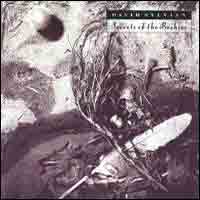 Eine meiner ersten CDs, keine Ahnung mehr, wie ich damals auf diese
Platte kam, da ich nie ein Fan der Band Japan
war (und sie quasi erst nach diesem Album für mich entdeckt habe!).
Vielleicht wegen des schönen Covers? Egal, denn letztendlich zählt
die Musik - und die ist hier mit dem Wort "schön" nur
völlig unzureichend beschrieben. Irgendwo liegt das Ganze zwischen
dem Sound seiner alten Band, Jazz, Folk und wer-weiß-was-noch. Sylvian
selber versucht sich als Gitarrist und Keyboarder und wird unterstützt
vom japanischen Soundtüftler Ryuichi Sakamoto, Englands
Basslegende Danny Thompson, Gitarrist Phil Palmer und
seinem Bruder und Ex-Japan-Mitstreiter Steve Jansen am Schlagzeug.
Eine meiner ersten CDs, keine Ahnung mehr, wie ich damals auf diese
Platte kam, da ich nie ein Fan der Band Japan
war (und sie quasi erst nach diesem Album für mich entdeckt habe!).
Vielleicht wegen des schönen Covers? Egal, denn letztendlich zählt
die Musik - und die ist hier mit dem Wort "schön" nur
völlig unzureichend beschrieben. Irgendwo liegt das Ganze zwischen
dem Sound seiner alten Band, Jazz, Folk und wer-weiß-was-noch. Sylvian
selber versucht sich als Gitarrist und Keyboarder und wird unterstützt
vom japanischen Soundtüftler Ryuichi Sakamoto, Englands
Basslegende Danny Thompson, Gitarrist Phil Palmer und
seinem Bruder und Ex-Japan-Mitstreiter Steve Jansen am Schlagzeug.

 Mehr ...
Mehr ...
|
"Streamlining the muted, organic atmospheres of the previous Gone
to Earth to forge a more cohesive listening experience, Secrets of the
Beehive is arguably David Sylvian's most accessible record, a delicate,
jazz-inflected work boasting elegant string arrangements courtesy of Ryuichi
Sakamoto. Impeccably produced by Steve Nye, the songs are stripped to
their bare essentials, making judicious use of the synths, tape loops,
and treated pianos which bring them to life; Sylvian's evocative vocals
are instead front and center, rendering standouts like "The Boy With
the Gun" and the near-hit "Orpheus" -- both among the most
conventional yet penetrating songs he's ever written -- with soothing
strength and assurance."
(Jason Ankeny, All Music Guide)
|
|
| Wedding Present: "George Best" (Reception, Okt. 1987) |
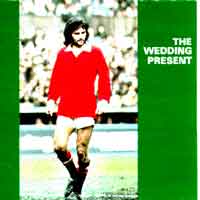 Es war natürlich extrem clever und werbewirksam, Nordirlands Fußball-Legende
hier in Bild und Titel zu huldigen. Man konnte sich dieser Platte zumindest
im Alternative-Marktsegment damals kaum entziehen. Aber schließlich
hat die Platte dann all ihre Aufmerksamkeit auch gerechtfertigt: Sänger,
Gitarrist und Songschreiber David Gedge lieferte mit seiner Band
Schrammelpop in Perfektion ab, meist in einem hohen Tempo mit reichlich
Punkgefühl.
Es war natürlich extrem clever und werbewirksam, Nordirlands Fußball-Legende
hier in Bild und Titel zu huldigen. Man konnte sich dieser Platte zumindest
im Alternative-Marktsegment damals kaum entziehen. Aber schließlich
hat die Platte dann all ihre Aufmerksamkeit auch gerechtfertigt: Sänger,
Gitarrist und Songschreiber David Gedge lieferte mit seiner Band
Schrammelpop in Perfektion ab, meist in einem hohen Tempo mit reichlich
Punkgefühl.

 Mehr ...
Mehr ...
Wiederver�ffentlichung des Klassikers.
Exakt zehn Jahre und einen Tag nachdem The Wedding Present ihr Deb�talbum "George Best" herausbracht hatten, wurde es 1997 von Cooking Vinyl wiederver�ffentlicht. Dem kompletten Album wurden neun Bonus�Tracks hinzugef�gt, die damals nur als Singles erh�ltlich waren. Mit "George Best" erhielten The Wedding Present 1987 endlich die Anerkennung, die sie verdienten. Dank David Gedges Songwriting wurde die Band eingereiht zwischen Namen wie Elvis Costello, Morrissey und Billy Bragg. Sie waren nicht l�nger nur die Band, die am schnellsten Gitarre spielt, sondern sie waren laut NME die Band, "die das Album des Jahres 1987 herausgebracht haben".
|
| Ry Cooder: "Get Rhythm" (Warner, Nov. 1987) |
|
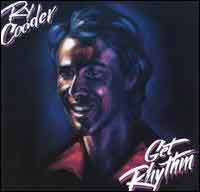 Das bislang letzte Soloalbum des Meisters der Slidegitarre, das kein
Filmsoundtrack ist und in dem es um SONGS geht! Wie unser neuer Gitarrist
Rainer in seiner Kritik zu James
Taylors Album "October
Road", auf dem Ry Cooder mal wieder in einem Lied seine Gitarrenkünste
aufblitzen lässt, so schön sagt: "Der Sack sollte übrigens
endlich wieder was Eigenes machen und nicht nur Kubaner und andere
Mitmenschen ausgraben und produzieren." (natürlich nix gegen
Kubaner!)
Das bislang letzte Soloalbum des Meisters der Slidegitarre, das kein
Filmsoundtrack ist und in dem es um SONGS geht! Wie unser neuer Gitarrist
Rainer in seiner Kritik zu James
Taylors Album "October
Road", auf dem Ry Cooder mal wieder in einem Lied seine Gitarrenkünste
aufblitzen lässt, so schön sagt: "Der Sack sollte übrigens
endlich wieder was Eigenes machen und nicht nur Kubaner und andere
Mitmenschen ausgraben und produzieren." (natürlich nix gegen
Kubaner!)
Klasse Songs, z.B. "Get Rhythm" von Johnny Cash und das
eigene "Across The Borderline" (Cooder/Hiatt/Dickinson),
das schon für den Soundtrack zu "Borderline" von Freddy
Fender gesungen wurde, hier jetzt von Cooder selber in Englisch und
Schauspieler Harry Dean Stanton in Spanisch vorgetragen!
Klasse Band: Bassist Jorge Calderon, Drummer Jim Keltner,
Pianist Van Dyke Parks, Akkordeonspieler Flaco Jimenez
und ein toller Chor: Terry Evans, Bobby King, Arnold
McCuller und Willie Green.

 Mehr ...
Mehr ...
|
"The Musician's Musician." "The Master of the Eclectic."
There are probably a dozen more titles by which this "guitar player"
is known. To even refer to him as a guitar player is probably a gross
mislabeling of this musician. He defies any sort of categorization; this
is his greatest strength and for some his weakness. The theme for these
nine cuts is rhythm of all different ilk. I won't even give the parameters
because he seems to have none. I wondered how many different instruments
he played on this album (I thought I counted five different types of guitar);
it only says guitar and vocal for his credits. Listen to his version of
"All Shook Up," more bop and rhythm than Elvis could put into
four of his songs. It seems musicians line up to play with him, and they
feel he did them a favor by letting them play on his albums. He always
gives them plenty of space to do what they do. This CD will make the dead
start tapping their toes." (Bob Gottlieb, All Music Guide)
|
|
| The Triffids: "Calenture" (Island, Nov. 1987) |
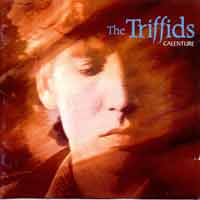 Die australische Truppe um den Sänger, Gitarristen und Songschreiber
David McComb unterschrieb nach mehreren Independent-Achtungserfolgen
beim englischen Island-Label und zog auch auf die Insel. Leider
blieb der große Erfolg genauso wie bei den Go-Betweens
aus und nach dem nächsten Album "The
Black Swan" war schon wieder alles vorbei. Dabei ist zumindest
"Calenture" ein wunderbares Album geworden. Besonders schön
ist die Singleauskopplung "Bury Me Deep In Love", mit der
die Band damals sogar in der ZDF-Drehscheibe zum Playback auftrat.
Auf jener Deutschlandtournee spielte die Band auch bei uns (das war
entweder in der Zeche Bochum oder Zeche Carl in Essen)
und ich konnte zum ersten mal in meinem Leben live einem Pedalsteelgitarristen
bei der Arbeit zusehen und zuhören: geil!
Die australische Truppe um den Sänger, Gitarristen und Songschreiber
David McComb unterschrieb nach mehreren Independent-Achtungserfolgen
beim englischen Island-Label und zog auch auf die Insel. Leider
blieb der große Erfolg genauso wie bei den Go-Betweens
aus und nach dem nächsten Album "The
Black Swan" war schon wieder alles vorbei. Dabei ist zumindest
"Calenture" ein wunderbares Album geworden. Besonders schön
ist die Singleauskopplung "Bury Me Deep In Love", mit der
die Band damals sogar in der ZDF-Drehscheibe zum Playback auftrat.
Auf jener Deutschlandtournee spielte die Band auch bei uns (das war
entweder in der Zeche Bochum oder Zeche Carl in Essen)
und ich konnte zum ersten mal in meinem Leben live einem Pedalsteelgitarristen
bei der Arbeit zusehen und zuhören: geil!

 Mehr ...
Mehr ...
|
The Triffids were never labeled as a Christian band, but there's an undeniably
spiritual feel to several of the songs on Calenture. Moreover, vocalist
David McComb spews his words with the fiery passion of a backwoods preacher.
The orchestral sweep of "Bury Me Deep in Love" recalls the Waterboys'
expansive sound; the lyrics are unmistakably religious as McComb looks
for salvation in a chapel. Fans of Nick Cave will immediately be seduced
by McComb's bluesy croon; deep and brimming with palpable sorrow, McComb's
voice never dwindles in intensity. "A Trick of the Light" opens
like a lullaby with its twinkling synths; the pitter-patter of the drums
augment the track's dream-like ambience. The lyrics, however, read like
the tortured confessions of a man obsessed with an ex-lover: "You
remind very much/Of someone that I used to know/We used to take turns
crying all night." The striking images in Calenture illustrate the
predicaments of each song's characters. The hallucinations suffered by
the woman in "Kelly's Blues" are vividly drawn: "Her tree
blew over/I shook her branches down/The wind and I, we howled around her
door/Now there's a buckle in the sky, lightning on the shore." The
grim "Vagabond Holes" details the anger of romantic rejection
with unflinching bitterness. Stoked by sinister guitars and pummeling
drums, McComb unleashes a volley of vindictive thoughts: "No one's
going to love you when you're wrinkled and old/No teeth in your gum, your
hair the colour of snow." The Triffids released one more LP, The
Black Swan, before the band split up and McComb sadly passed away. McComb's
explosive rage at the finale of "Vagabond Holes" should've been
the Triffids' last gasp, an unsettling blast of scarred emotions that
isn't easy to shake off.
(by Michael Sutton, All
Music Guide)
|
|
| Townes van Zandt: "At My Window" (Heartland, Nov. 1987) |
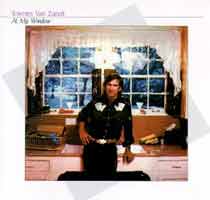 Nach fast 1ojähriger Pause gab es 1987 endlich wieder Lebenszeichen
des Ausnahme-Songschreibers: zuerst Liveaufnahmen von 1985 ("Live
& Obscure") und dann zur großen überraschung ein
Studioalbum mit neuen Songs, dieses mal von den Nashville-Legenden Jack
Clement und Jim Rooney produziert. Zu den neuen Liedern gehören
das wunderschöne "Snowin' On Raton" (das erste Lied,
was ich je von TVZ hörte, nachts bei Alan Bangs im Night
Flight!) und "Buckskin Stallion Blues". Von "For The
Sake Of The Song" ist es bereits die dritte Studioversion nach
1968 und 1970. Vor "No Deeper Blue" von 1994 war das die letzte
Platte von TVZ mit neuem Material.
Nach fast 1ojähriger Pause gab es 1987 endlich wieder Lebenszeichen
des Ausnahme-Songschreibers: zuerst Liveaufnahmen von 1985 ("Live
& Obscure") und dann zur großen überraschung ein
Studioalbum mit neuen Songs, dieses mal von den Nashville-Legenden Jack
Clement und Jim Rooney produziert. Zu den neuen Liedern gehören
das wunderschöne "Snowin' On Raton" (das erste Lied,
was ich je von TVZ hörte, nachts bei Alan Bangs im Night
Flight!) und "Buckskin Stallion Blues". Von "For The
Sake Of The Song" ist es bereits die dritte Studioversion nach
1968 und 1970. Vor "No Deeper Blue" von 1994 war das die letzte
Platte von TVZ mit neuem Material.
|
| fIREHOSE: "if'n" (SST, Dez. 1987) |
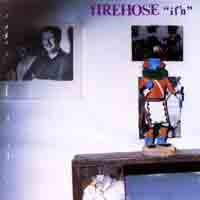 Zweites Album der ehemaligen Rhythmusgruppe der Punklegende Minutemen
(Mike Watt am Bass und George Hurley am Schlagzeug) mit
dem Gitarristen Ed Crawford, als Nachfolger des verstorbenen
Minutemen- Gitarristen D. Boon. Ich kann gar nicht so genau sagen,
was das für eine Musik ist. Irgendwie natürlich Rockmusik
von einem "normalen" Gitarre/Bass/Drums-Trio, aber andererseits
haben wir hier eine Art von Zusammenspiel der Musiker, das eher an Jazztrios
erinnert. Es ist natürlich kein Jazz, der hier von den Jungs geboten
wird - aber eben auch kein korrekter "Rock". Einzigartig,
kraftvoll und ziemlich frickelig. Live ein absolutes Erlebnis (Zeche
Bochum ca. 1987/88). Außerdem muss ich mich hier als Softie outen: für
die "richtig harten Fans" sind fIREHOSE den legendären
Minutemen gegenüber natürlich nur zweite Wahl - für mich
aber wesentlich angenehmer zu hören. Es gibt mit "In Memory
Of Elizabeth Cotton" sogar einen richtig schönen Folksong
von Ed.
Zweites Album der ehemaligen Rhythmusgruppe der Punklegende Minutemen
(Mike Watt am Bass und George Hurley am Schlagzeug) mit
dem Gitarristen Ed Crawford, als Nachfolger des verstorbenen
Minutemen- Gitarristen D. Boon. Ich kann gar nicht so genau sagen,
was das für eine Musik ist. Irgendwie natürlich Rockmusik
von einem "normalen" Gitarre/Bass/Drums-Trio, aber andererseits
haben wir hier eine Art von Zusammenspiel der Musiker, das eher an Jazztrios
erinnert. Es ist natürlich kein Jazz, der hier von den Jungs geboten
wird - aber eben auch kein korrekter "Rock". Einzigartig,
kraftvoll und ziemlich frickelig. Live ein absolutes Erlebnis (Zeche
Bochum ca. 1987/88). Außerdem muss ich mich hier als Softie outen: für
die "richtig harten Fans" sind fIREHOSE den legendären
Minutemen gegenüber natürlich nur zweite Wahl - für mich
aber wesentlich angenehmer zu hören. Es gibt mit "In Memory
Of Elizabeth Cotton" sogar einen richtig schönen Folksong
von Ed.
|
| American Music Club: "Engine" (Frontier, 1987) |
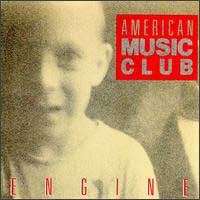 |
| And Also The Trees: "Et Aussi Les Arbres" (Reflex, 1987) |
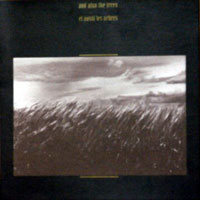 Nicht unbedingt das bekannteste Album einer der bestgehüteten Geheimnisse
der 80er - aber eben jenes Album, mit dem ich diese zu Unrecht als "Grufties"
verschriene Truppe aus England kennen gelernt habe. Es handelt sich
dabei um eine Kompilation mit Single-, EP- und LP-Beiträgen aus
den Jahren 1983-86. Eine der frühen Singles, das wunderbare "Shantell",
wurde damals vom Cure Drummer/Keyboarder Lol Tolhurst
produziert und die Band auch mehrfach in das Vorprogramm von The
Cure bugsiert. Die Band setzt zwar ähnlich wie diese oder U2
auf Echo-Gitarre (der Gitarrist nennt das den "Balalaika-Sound"),
man kann also durchaus von "düsterem Bombast" sprechen.
Aber insgesamt war die Gruppe wohl zu spröde für den Massendurchbruch
im Gruftie- oder Popmarkt. Und deshalb vielleicht auch hörbar für
jemanden wie mich, der mit den oben genannten Bands ansonsten wenig
anfangen kann!
Nicht unbedingt das bekannteste Album einer der bestgehüteten Geheimnisse
der 80er - aber eben jenes Album, mit dem ich diese zu Unrecht als "Grufties"
verschriene Truppe aus England kennen gelernt habe. Es handelt sich
dabei um eine Kompilation mit Single-, EP- und LP-Beiträgen aus
den Jahren 1983-86. Eine der frühen Singles, das wunderbare "Shantell",
wurde damals vom Cure Drummer/Keyboarder Lol Tolhurst
produziert und die Band auch mehrfach in das Vorprogramm von The
Cure bugsiert. Die Band setzt zwar ähnlich wie diese oder U2
auf Echo-Gitarre (der Gitarrist nennt das den "Balalaika-Sound"),
man kann also durchaus von "düsterem Bombast" sprechen.
Aber insgesamt war die Gruppe wohl zu spröde für den Massendurchbruch
im Gruftie- oder Popmarkt. Und deshalb vielleicht auch hörbar für
jemanden wie mich, der mit den oben genannten Bands ansonsten wenig
anfangen kann!
|
| The Bats: "Daddy's Highway" (Flying Nun, 1987) |
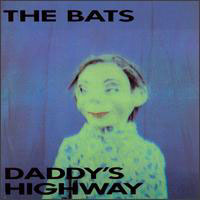

 Mehr ...
Mehr ...
The Bats' first full album continues the early promise of their EPs and,
with only the slightest deviations and changes since, established their
sound for just about everything that followed. Scott and company may not
be the most willfully experimental of musicians, but when they're on --
more often the case than not -- their lovely, melancholic songs simply
hit the spot. Woodward forms the perfect singing partner for Scott, while
guest violinist Alastair Galbraith brings his talent to the fore as he
has for so many other New Zealand bands. "Treason" makes for
a good start to the album, but the real standout on Daddy's Highway is
the surging "North by North." Featuring a fantastic Galbraith
violin solo, it gives the band the opportunity to show its sometime hidden
strengths for more energetic, nervous material. Scott's vocal performance
is one of his best, and the quick, on-edge pace seems to get even more
so as the song continues. Quieter songs unsurprisingly abound as well,
from the understated sweetness of "Sir Queen" to the gentle
keyboard-touched "Candidate." "Tragedy" is one of
the best in this vein, ending in a disturbing low drone (or at least as
much of a drone as the generally quick-length songs by the Bats allow
for). Though Daddy's Highway suffers a touch from the same problem that
affects all Bats releases -- an increasing sameness, especially towards
album's end -- it's still a great full album debut.
(by Ned Raggett, All Music Guide)
|
| Die Brüder: "Trying To Remember To Forget" (One Million, 1987) |
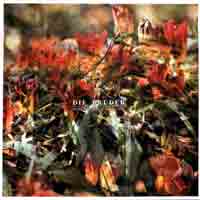 Mal was richtig exotisches: Englischsprachiger Gitarrenpop der Oberklasse
aus österreich. Kein Scherz! Gibt's nicht? Gibt's doch! Die Brüder
Boris Wörrister (Gitarre) und Marc Punc (Gesang)
samt Mitstreitern an Bass, Schlagzeug und Orgel, ließen mit diesem Debütalbum
für kurze Zeit die Popwelt aufhorchen (nun ja - vielleicht einige
DJ's, Radiomoderatoren und eine handvoll Fans). Der Nachfolger von 1990
kam dann sogar beim Multi PolyGram heraus und versank trotzdem sang-
und klanglos. Höre ich da vielleicht wieder ein paar böse
Kommentare von wegen "große Plattenfirma schnappt sich Achtungserfolg,
versucht schnelle Kohle zu machen und hat keine Geduld mit dem Aufbau
der Künstler"?
Mal was richtig exotisches: Englischsprachiger Gitarrenpop der Oberklasse
aus österreich. Kein Scherz! Gibt's nicht? Gibt's doch! Die Brüder
Boris Wörrister (Gitarre) und Marc Punc (Gesang)
samt Mitstreitern an Bass, Schlagzeug und Orgel, ließen mit diesem Debütalbum
für kurze Zeit die Popwelt aufhorchen (nun ja - vielleicht einige
DJ's, Radiomoderatoren und eine handvoll Fans). Der Nachfolger von 1990
kam dann sogar beim Multi PolyGram heraus und versank trotzdem sang-
und klanglos. Höre ich da vielleicht wieder ein paar böse
Kommentare von wegen "große Plattenfirma schnappt sich Achtungserfolg,
versucht schnelle Kohle zu machen und hat keine Geduld mit dem Aufbau
der Künstler"?

 Mehr ...
Mehr ...
|
"1987, als der Großteil der österreichischen Popmusik
wie eine Mischung aus kanadischem 70er-Jahre-Pop und billigstem Elton
John-Kunsthandwerk für arme Leute klang, also ziemlich zahm und ebenso
lahm, daß sie selbst der mediokren Pop-Journaille gefallen konnte,
deren begnadet-tauben, treffsicheren Sinn für das Mittelmäßige
man wirklich nur mit größter Mühe erdulden konnte, veröffentlichten
die Brüder Wörister (Boris und Mark) ihr Debütalbum "Trying
To Remember How To Forget" - die großartigste Popmusik einer
österreichischen Band bis zum heutigen Tage.
Große Gefühle, schwermütige Akkorde, rebellische Attitüde
- die Sprache der jugendlichen Melancholie. An den Brüdern - Marc
Punc (Wörister, Vocals), Boris Wörister (Guitar, Backing Vocals),
Willy Brumec (Keyboards), Gerrit Korobath (Bass), Gernot Butschek (Drums
& Backing Vocals) - war aller Austro-Pop glücklicherweise vorbeigegangen;
die musikalischen Einflüsse und Vorbilder reichten von R.E.M. über
die Bollock Brothers bis hin zum Liverpool-Pop der Smiths und ähnlich
gearteter Bands.
Die bunten Blumen auf dem Cover verhüllen melancholisch angehauchten
Gitarrenpop wie auch jugendlich-forsche Rebellions-Attitüden.
Boris, der ältere der Wörister-Brüder, der bei allen zehn
Songs für Text und Musik verantwortlich zeichnet, war nicht nur der
ruhende, ausgleichende Pol der Band, sondern brachte auch deren zärtliche,
sanfte und einfühlsame Saite stärker zum Klingen. Das Leiden
an der Welt wird bei ihm und seinen Songs zu einer sanften Umarmung.
Sein jüngerer Bruder, Marc (Punc) Wörister wirkte dagegen wie
ein ewig zorniger James Dean-Epigone aus der Wiener Vorstadt, der im Studio
wie auch auf der Bühne geschickt das Tempo variierte und so die rebellisch-aufmüpfige
Note der Brüder stärker in den Vordergrund rückte.
Schon der Eröffnungssong des Albums "Feet Don't Fit" gibt
den musikalischen Weg vieler Stücke vor: trockene Gitarren, perfekter
Rhythmus und Marc Wöristers genuiner Gesang. So folgen wahrhafte
Pop-Perlen wie das beschwingte "Suddenly She's Happy Again",
das dezent-melancholische "All Those Years" ("remembrance
is a bad disease / she does not like anniversaries / where did she lose
all those years"), das vorwärtsdrängende "Let's Pretend
To Be Happy", sowie das subtil-subversive "Nothing To Be Sure
Of". Songs, aufgebaut auf schlichten Ideen, die aber mit größtem
Stilwillen, Klarheit des Bewusstseins und verblüffender Intensität
umgesetzt wurden und heute, dreizehn Jahre später, noch so frisch
wie am ersten Tag klingen.
Aufgrund der offensichtlichen R.E.M.- und Smiths-Vorliebe könnte
man den Brüdern Eklektizismus vorwerfen, wäre da nicht der Brennpunkt
Marc Punc: Sein rebellisches Sentiment und seine lodernde Wehmut bündeln
alles, in seinem Gesang verschmelzen sämtliche Einflüsse und
Anleihen zu einem großen Ganzen. So auch im Song "One Last
Ray Of Sunshine", dem schönsten aber wohl auch melancholischsten
Stück des Albums, das einen Sommer lang an eine erfreuliche Zukunft
der österreichischen Popmusik glauben ließ." (Heimo Mürzl)
|
|
| The Doctors Children: "King Buffalo" (Line/Upright, 1987) |
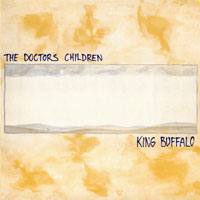 |
| Tav Falco's Panther Burns: "The World We Knew" (New Rose, 1987) |
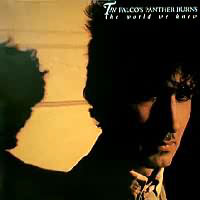 |
| Penelope Houston: "Birdboys" (Subterranean, 1987) |
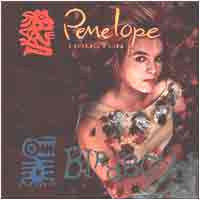 Fantastisches Solo-Debüt der Ex-Sängerin von San Franciscos Punk-Legende Avengers als "Queen Of New Folk",
das ich aber erst über das Nachfolgealbum The Whole World von 1993 kennen gelernt habe.
Eine klasse Band (Pat Johnson-Gitarre, Steven Strauss-Kontrabass, Kevin Donahue-Piano und Mel Peppas-Mandoline).
Soweit ich weiß, war das die letzte Produktion vom englischen Gitarristen und Teilzeit-Residents-Mitstreiter Phillip Lithman,
besser bekannt als Snakefinger, der im Jahr 1987 verstarb.
Fantastisches Solo-Debüt der Ex-Sängerin von San Franciscos Punk-Legende Avengers als "Queen Of New Folk",
das ich aber erst über das Nachfolgealbum The Whole World von 1993 kennen gelernt habe.
Eine klasse Band (Pat Johnson-Gitarre, Steven Strauss-Kontrabass, Kevin Donahue-Piano und Mel Peppas-Mandoline).
Soweit ich weiß, war das die letzte Produktion vom englischen Gitarristen und Teilzeit-Residents-Mitstreiter Phillip Lithman,
besser bekannt als Snakefinger, der im Jahr 1987 verstarb.
Das Songmaterial stammt meist von Penelope alleine oder zusammen mit
einem ihrer Musiker, aber am besten gefallen mir neben "Harry Dean"
(von Penelope zusammen mit Avengers-Gitarrist Greg Ingraham verfasst)
zwei Lieder, die Pat Johnson alleine schrieb: "Waiting Room"
und "Putting Me On The Ground".

 Mehr ...
Mehr ...
|
A moody, melodic debut that evokes the spirit of Nick Drake and Sandy
Denny with its brooding images of loss. Mandolins, accordion, acoustic
bass, and sparse percussion (usually tambourines and bells) almost qualify
this as a contemporary folk album, but Houston's biting and somber approach
draws from her punk and alternative-rock roots. The writing is inconsistent,
and Houston's fragile voice is sometimes not as forceful as the material
seems to demand, but overall this is one of the more underrated alternative
music statements of the late 1980s. (by Richie Unterberger, All Music
Guide)
|
|
| "The band provides stunning backdrops for her voice--always
an impressive instrument, and now possessed with a roundness more akin to
British folk-blues artists. Compares with the best of Pentangle. The skill
with which the Birdboys execute their jazz-folk-blues rhythms makes the
comparison appropriate. The record is a fine achievement ..something quite
fresh."-Puncture. A CMJ Jackpot! review called Birdboys "light
years away from the Avengers sound, though no less fervent. Penelope's voice
takes on a lilt and range that is sweetly infectious enough to warm the
most cynical of ears. If life hasn't meant much to you since Richard and
Linda Thompson broke up, Penelope's acrobatic vocals, and lyrics that deal
deftly with adult themes like love and politics will give you purpose once
again." (???) |
|
| Hurrah! "Tell God I'm Here" (Arista/Kitchenware, 1987) |
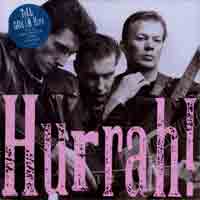 Diese Band aus Newcastle vom Kitchenware-Label, dem wir auch
Prefab Sprout, die Kane Gang,
Martin Stepheson & The Daintees und die Fatima Mansions
zu verdanken haben, ist leider schnell wieder in der Versenkung verschwunden,
obwohl wunderbarer Gitarrenpop geboten wird. Die Band spielte damals
übrigens als Headliner auf dem Meidericher "Rock Im Park"-Festival,
obwohl sie dort wahrscheinlich außer mir und dem Veranstalter kein Schwein
kannte. Neben dieser Major-Veröffentlichung gab's im selben Jahr
noch ein Livealbum mit Aufnahmen von 1985 - und das war's dann.
Diese Band aus Newcastle vom Kitchenware-Label, dem wir auch
Prefab Sprout, die Kane Gang,
Martin Stepheson & The Daintees und die Fatima Mansions
zu verdanken haben, ist leider schnell wieder in der Versenkung verschwunden,
obwohl wunderbarer Gitarrenpop geboten wird. Die Band spielte damals
übrigens als Headliner auf dem Meidericher "Rock Im Park"-Festival,
obwohl sie dort wahrscheinlich außer mir und dem Veranstalter kein Schwein
kannte. Neben dieser Major-Veröffentlichung gab's im selben Jahr
noch ein Livealbum mit Aufnahmen von 1985 - und das war's dann.

 Mehr ...
Mehr ...
Hurrah!'s Tell God I'm Here is an album of near-misses. The band tries to sustain interest for an entire LP, but only two tracks are really worthy of attention. The slashing riffs and dynamic vocals of "Sweet Sanity" cut through the album's unyielding blandness. Having the explosive energy and scissor-sharp hooks of a top-drawer radio hit, "Sweet Sanity" slams the door on the LP's middling guitar pop. Tell God I'm Here is handicapped by the group's inability to inject personality and engrossing lyrics into its songs. Acclaimed for its singles, Hurrah! knows how to pack enough toe-tapping melodies onto a 12"; Tell God I'm Here, however, stretches the band's limited scope. Hyped by the British press when it was initially released, Tell God I'm Here is faceless college rock; the group tries to be catchy, but aside from "Sweet Sanity" and "If Love Could Kill," the music is too generic to leave a lasting impression. On "If Love Could Kill," a gripping bassline builds up tension; when the chiming guitars of Paul Handyside and David "Taffy" Hughes kick in, the band sounds inspired, relishing every groove with unshackled exuberance. Once "If Love Could Kill" is finished, though, the group loses its momentum. "Better Time" borrows the Bluebells' warm harmonies but none of that band's tunefulness. In fact, much of Tell God I'm Here creates a sense of d�j� vu; just about everything on the album has been done before � and with more positive results � by the Smiths, the Mighty Lemon Drops, and the Wedding Present.
(by Michael Sutton, All Music Guide)
|
| Lyle Lovett: "Pontiac" (Curb, 1987) |
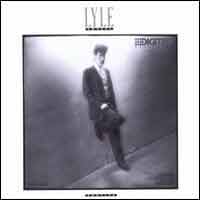 Das zweite Album hält mühelos den Standard des Debütalbums vom letzten Jahr!
Das zweite Album hält mühelos den Standard des Debütalbums vom letzten Jahr!

 Mehr ...
Mehr ...
|
"Greatly expanding upon the seemingly unlimited promise of his self-titled
debut, Lyle Lovett returns with the exemplary Pontiac, which finds him
sharpening his renowned songwriting skills while moving further away from
traditional country without a single misstep. Opening with the arch "If
I Had a Boat," Lovett proceeds to subvert the Nashville formula at
every turn, next delivering "Give Back My Heart," a not-so-subtle
dig at country's key demographic, and "L.A. County," which twists
the classic revenge song to its ultimate extreme; in between he delivers
a pair of stunning love songs, "I Loved You Yesterday" and the
elegiac "Walk Through the Bottomland," the latter adorned by
haunting vocal support from Emmylou Harris. Still, it's the second half
of Pontiac where Lovett really spreads his wings, rejecting Nashville
conventions to move headlong into jazz and blues territory; tipping his
hand with the wonderfully snarky "She's No Lady," he quickly
asserts himself as a jack of all musical trades, capable of mastering
big band workouts like the slinky "Black and Blue" as well as
beautifully mournful ballads like "Simple Song," Pontiac's centerpiece
and arguably Lovett's finest moment to date." (Jason Ankeny, All
Music Guide)
|
|
| Opal: "Happy Nightmare Baby" (Rough Trade/SST, 1987) |
 Nach seinem Ausstieg bei Rain Parade, deren Debüt "Emergency Third Rail Power Trip"
er maßgeblich beeinflusst hatte, und dem von ihm initiierten Sessionprojekt Rainy Day konzentrierte sich
David Roback auf das Konzept "Instrumentalist mit Sängerin im Duo", zuerst mit Kendra Smith (Ex-Dream Syndicate) unter
dem Namen "Opal", ab 1990 mit Hope Sandoval unter dem Namen Mazzy Star,
was mit "Fade Into You" 1994 sogar einen Top-50-Hit abwarf. Gott sei Dank klingt das Ganze aber nicht wie viele andere derartige
Duos (z.B. Eurythmics oder Roxette).
Nach seinem Ausstieg bei Rain Parade, deren Debüt "Emergency Third Rail Power Trip"
er maßgeblich beeinflusst hatte, und dem von ihm initiierten Sessionprojekt Rainy Day konzentrierte sich
David Roback auf das Konzept "Instrumentalist mit Sängerin im Duo", zuerst mit Kendra Smith (Ex-Dream Syndicate) unter
dem Namen "Opal", ab 1990 mit Hope Sandoval unter dem Namen Mazzy Star,
was mit "Fade Into You" 1994 sogar einen Top-50-Hit abwarf. Gott sei Dank klingt das Ganze aber nicht wie viele andere derartige
Duos (z.B. Eurythmics oder Roxette).

 Mehr ...
Mehr ...
At once drowsy, psychedelic, entrancing, and possessed of a sinuous spark, Happy Nightmare Baby may have been Opal's only album but deserves more attention than merely being a blueprint for Roback's later work in Mazzy Star. For one thing, Opal was very much its own band, with Kendra Smith's particular lyrical visions of mystic power and universe-scaling dreams and nightmares its own entity. As is her singing, though she's got less of Hope Sandoval's wistful drift and more focused control -- check out the brief "A Falling Star," where the comparatively stripped-down arrangement places her singing in the foreground, notably without much in the way of echo. Roback's playing certainly won't surprise anyone per se who backtracks to this group from albums like She Hangs Brightly, and the atmosphere of textured, moody power is evident right from the start with the wonderful early T. Rex tribute, "Rocket Machine." The compressed string swirl and steady stomp is pure Marc Bolan-via-Tony Visconti, though Smith avoids Bolan's style of warble for her own cool, something also quite evident on the slow-groove stomp of the great "She's a Diamond" and the concluding "Soul Giver." Meanwhile, other familiar elements Roback would later use are present aplenty -- very Ray Manzarek-like organ lines on the mantra-chugs of "Magick Power" and "Siamese Trap," compressed acid rock solos and lots of reverb. The title track itself stands out a bit as being a bit more of a '60s Europop confection in a stripped-down 1968 setting -- Roback's electric guitar adds some fire, but it's the slightly jazz-tinged rhythm and easy delivery from Smith that helps establish its own character. It's a release that stood out both in time and place (a 1987 release on SST Records, of all places!), but it stands up to future years and listens darn well.
(by Ned Raggett, All Music Guide)
|
| Shiny Gnomes: "Some Funny Nightmares" (Pastell, 1987 * Polydor, Mai 1988) |
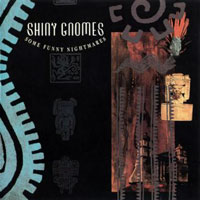 Ein Lichtblick deutscher Rockmusik in den 80ern mit dem zweiten Album,
in das sogar die große Plattenfirma Polydor so große
Hoffnung gesetzt hatte, dass es bereits wenige Monate nach der Erstveröffentlichung
bei der kleinen Firma Pastell aus Hagen eine Wiederveröffentlichung gab!
Ein Lichtblick deutscher Rockmusik in den 80ern mit dem zweiten Album,
in das sogar die große Plattenfirma Polydor so große
Hoffnung gesetzt hatte, dass es bereits wenige Monate nach der Erstveröffentlichung
bei der kleinen Firma Pastell aus Hagen eine Wiederveröffentlichung gab!
(07.06.2010)

 Mehr ...
Mehr ...
Es ist erst die zweite LP und doch klingen die Shiny Gnomes mit ihren rockig flockigen Stücken wie gute alte Bekannte, die mit handgemachter Beatmusik, mit düsteren Psychedelic-Nummern, rauen angepunkten Abgehstücken und akustischem Klangbeiwerk mal wieder vorbeischauen und aufzeigen, dass es sie noch gibt, lebendiger als je zuvor. Ohne dass sie jemanden kopieren, kommen sie ungemein vertraut.
(Musik Des Westens)
Und noch einmal Nachschlag zur deutschen High Class of 87 - Garagenedition “The Sound and the Fury” des Waltroper Big Store-Labels. Da hätten z.B. die fränkischen Shiny Gnomes auch ihr Plätzchen verdient, haben sie doch zumindestens mit Broken Jug gemeinsam, über jegliches vorsichtige Ausloten der eigenen Stilbreite hinaus zu sein. Sich (endlich) wieder klassisch in allen Schweinepfuhlen dies und jenseits des guten Geschmacks (hier einsetzen nach Bedarf. Aber nicht relativ - du Idiot!) zu suhlen und dabei von Sitarklängen, Paisley Pop, 70ern auf und awärts, fröhlichem Feelies-Offshoot und Country&Western alles zu verbraten. Some Funny Nightmares mischt, was an Stilen gerade da ist, ohne dass sich daraus so was wie Flatterhaftigkeit ableiten ließe oder man sich an bärtige langhaarige Crossoverprodukte erinnert fühlt. Sind einfach zu verschlagen gut dafür. Und den blöden Witz mit Zwergen bei tiefstehender Sonne kann man sich getrost sparen.
(Spex, Köln)
Die beste Platte zuerst: Diese vier Nürnberger haben wirklich allerhand zu bieten. Zunächst mal - und das ist sowieso das Wichtigste - können sie Songs und Melodien schreiben. Gitarrenbeat zum Mitsingen und Einprägen, und da kann sie wirklich manch einer nicht nur hierzulande für beneiden. Dann schaffen sie es auch noch, die Songs gut zu arrangieren mit allem, was man sich wünschen kann: das superschnelle Time Is Right mit Orgel, Lazing At Desert Inn mit Fiddle, Dr. Moustache mit Sitar und das sind gerade mal die ersten drei Stücke. In erster Linie sind die Gnomes natürlich eine Gitarrenband mit sehr viel Beat und Power, eine, die überdies ach noch richtig gut singen kann. Die Produktion, auch das in Eigenregie, bringt das Ganze sehr schön ungeschliffen auf den Punkt. (Stadtrevue, Köln)
|
| The Silos: "Cuba" (Record Collect, 1987) |
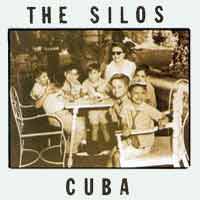 Ich hatte die Band um die beiden Sänger/Gitarristen Walter Salas-Humara
und Bob Rupe zwar erst mit dem unbetitelten Reunion-Album von
1990 kennen gelernt, stellte aber
schnell fest, dass sie mit "Cuba" bereits ein kleines, wenn
auch kaum beachtetes Meisterwerk abgeliefert hatten.
Ich hatte die Band um die beiden Sänger/Gitarristen Walter Salas-Humara
und Bob Rupe zwar erst mit dem unbetitelten Reunion-Album von
1990 kennen gelernt, stellte aber
schnell fest, dass sie mit "Cuba" bereits ein kleines, wenn
auch kaum beachtetes Meisterwerk abgeliefert hatten. |
| Sneaky Feelings: "Waiting For Touchdown" (Normal/Flying Nun, 1987) |
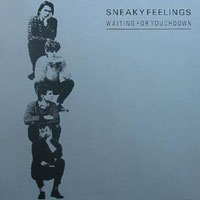 "Musik aus Neuseeland" klebt als Sticker vorne auf meinem Exemplar der
Platte. Das war damals eine kleine Welle bei uns, für die das Bonner
Label Normal als europäische Vertretung und das neuseeländische
Label Flying Nun wichtig waren. Damals konnte man von Flying
Nun ungehört (fast) alles kaufen. Bei "Waiting For Touchdown"
handelt es sich um eine Kompilation für den europäischen Markt
mit Liedern vom 84er Debütalbum "Send You" und von den
7"-EP's "Husband House" (1985) und "Better Than
Before" (1986). Wie bei den Labelkollegen The
Verlaines, The Chills und The
Clean handelt es sich um Gitarrenrock, allerdings waren die Sneaky
Feelings immer etwas "normaler" bzw. poppiger als ihre
Kollegen und haben deswegen vielleicht nicht den gleichen Kultstatus.
Auf jeden Fall hatten sie tolle Songs, geschrieben von allen vier Musikern
- also auch vom Trommler und vom Bassisten!
"Musik aus Neuseeland" klebt als Sticker vorne auf meinem Exemplar der
Platte. Das war damals eine kleine Welle bei uns, für die das Bonner
Label Normal als europäische Vertretung und das neuseeländische
Label Flying Nun wichtig waren. Damals konnte man von Flying
Nun ungehört (fast) alles kaufen. Bei "Waiting For Touchdown"
handelt es sich um eine Kompilation für den europäischen Markt
mit Liedern vom 84er Debütalbum "Send You" und von den
7"-EP's "Husband House" (1985) und "Better Than
Before" (1986). Wie bei den Labelkollegen The
Verlaines, The Chills und The
Clean handelt es sich um Gitarrenrock, allerdings waren die Sneaky
Feelings immer etwas "normaler" bzw. poppiger als ihre
Kollegen und haben deswegen vielleicht nicht den gleichen Kultstatus.
Auf jeden Fall hatten sie tolle Songs, geschrieben von allen vier Musikern
- also auch vom Trommler und vom Bassisten!
(07.03.2008)

 Mehr ...
Mehr ...
|
Sneaky Feelings were an often overlooked group of the '80s New Zealand
rock scene whose closest comparison is the Verlaines. Leader Matthew Bannister's
songs may have been a little too savvy for the gritty underground sound
of Straightjacket Fits or the Gordons, and likewise too quirky for the
mainstream that embraced Crowded House and Split Enz. For being somewhat
of a cult title in the underground for two decades, Waiting for Touchdown
is a highly crafted and beautiful collection of guitar pop songs, exhibiting
a sound and sensibility that would crop up much later in the U.K. indie
sound of Arab Strap and Belle & Sebastian. On hearing this album it's
easy to see what all the critical acclaim and fuss surrounding the band
was about. Those who have exhausted their Flying Nun collections —
Chills, Straightjacket Fits, the Clean — will welcome this as being
more than a footnote in the history of New Zealand pop.
(by Skip Jansen, All
Music Guide)
|
|
| Louis Tillett: "Ego Tripping At The Gates of Hell" (Citadel, 1987) |
 Nachts bei Alan Bangs habe ich den australischen Pianisten Louis
Tillett zum ersten mal mit seiner damaligen Band Wet Taxis gehört.
Als er dann auch was von diesem Solodebüt spielte war ich total
begeistert und habe mir die Platte als teuren Import schleunigst besorgt.
Wir hören traurig schöne Balladen und Midtemposongs, irgendwo
zwischen Rock, Jazz und Blues.
Nachts bei Alan Bangs habe ich den australischen Pianisten Louis
Tillett zum ersten mal mit seiner damaligen Band Wet Taxis gehört.
Als er dann auch was von diesem Solodebüt spielte war ich total
begeistert und habe mir die Platte als teuren Import schleunigst besorgt.
Wir hören traurig schöne Balladen und Midtemposongs, irgendwo
zwischen Rock, Jazz und Blues.

 Mehr ...
Mehr ...
|
"Louis Tillett ist so etwas wie die graue Eminenz der australischen
Rock- musik. Der Songschreiber, Sänger und exzellente Pianist unterhält
diverse Bandprojekte, produziert und ist Gastmusiker bei unzähligen
Plattenaufnahmen. Läßt der Albumtitel Düster-Depressives
vermuten, so belehrt der Tausendsassa seine Hörer eines Besseren.
Anstelle von Schwermut und Weltschmerz zaubert Tillett eine frische und
intelligente Mixtur aus Jazz, Blues und Rock aus den Rillen. Respektlos
wagt er sich in Coverversionen sogar an den exzentrischen Free-Jazzer
Roland Kirk und das New-Orleans-Denkmal Allen Toussaint heran."
(Stereoplay)
|
|
|
Ego Tripping at the Gates of Hell is a delightful synthesis of all the
music styles that Tillett has been experimenting with over a decade of
music with bands such as Wet Taxis and Paris Green - a mixture of jazz,
soul and blues performed by a man with a rock'n'roll heart. "Fear
not, the independant scene in Australia is not quite as moribund as you
might think - there's still life in them there grooves! Witness No 1 for
The Defence is Louis Tillett whose first solo album, the wonderfully titled
Ego Tripping at the Gates of Hell, is as superb as anything released by
an Australian artist in the past twelve months. Ego Tripping at the Gates
of Hell is a delightful synthesis of all the music styles that Tillett
has been experimenting with over a decade of music with bands such as
Wet Taxis and Paris Green - a mixture of jazz, soul and blues performed
by a man with a rock'n'roll heart.
Tillett's career started as singer and keyboard player with Wet Taxis
in 1977 and subsequently he's played piano on records by Laughing Clowns,
Celibate Rifles, Died Pretty, and the New Christs. During 1983 Tillett
recorded with No Dance, an acoustic trio that also featured Brett Myers
from died Pretty and Damien Lovelock from Celibate Rifles. Prior to the
recording of Ego Tripping at the Gates of Hell Tillett was playing with
Paris Green, a jazz and blues inspired outfit.
The decision to record a solo album was out of a partial frustration with
working within the confines of a band structure. "There's good and
bad things about working with a band," Tillett said last week. "If
it's successful the musicians come together and there's a power in it
and you get a sound - but then you're restricted by that sound. The idea
of this record was to get away from what people expect from Wet Taxis.
When kids are spending $5 or $6 to come and see Wet Taxis you have to
fulfill your end of the bargain and be Wet Taxis.
Tillett has always worked outside the mainstream of rock'n'roll, mainly
because he doesn't want to play the games usually associated with mass
success in this country. "The idea was to do something straight from
the heart, something emotional," he said. "I think that music
is failing miserably at the moment because it's dominated by marketing
people who want to create something that's predictable.To me, music is
an indulgence in emotions, whether it be happy, sad or something in between."
Ego Tripping at the Gates of Hell does that magnificently and it's my
guess that his concert date at the Mandolin Cinema (150 Elizabeth St City)
on Friday will be exactly the same. Tillett is appearing with his twelve
piece band, The Egotrippers from Hell, along with a solo performance from
Louis Burdett. Not to be missed if you want my opinion."
(Stuart Coupe, The Sun Herald, Jan 24 1988)
|
|
| The Verlaines: "Bird Dog" (Homestead/Flying Nun, 1987) |
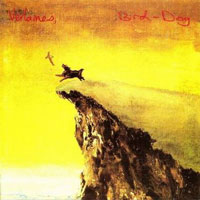 Das zweite Album dieser unterschätzen Band aus Neuseeland. Zwar bleibt
"Hallelujah, All The Way Home"
vom vergangenen Jahr als meine "Initialzündung" immer die
Nummer 1 für mich - aber eigentlich ist "Bird Dog" noch besser,
wenn man genauer hinhört!
Das zweite Album dieser unterschätzen Band aus Neuseeland. Zwar bleibt
"Hallelujah, All The Way Home"
vom vergangenen Jahr als meine "Initialzündung" immer die
Nummer 1 für mich - aber eigentlich ist "Bird Dog" noch besser,
wenn man genauer hinhört!
Neulich hat mir ein Freund erzählt, welche "Unsitten" beim
Biertrinken in Neuseeland herrschen. Da wird Bier in Eimer geschüttet
und daraus dann mit Suppenlöffeln in Gläser gefüllt. Noch schlimmer
also als in England. So erklärt sich auch der überschwänglich gesungene
Refrain vom Titelsong:
"I love that imported German beer,
They know how to make it over there"
(Mai 2009)

 Mehr ...
Mehr ...
Crafty New Zealand pop group lead by song craftsman Graham Downes that leaned heavily toward Baroque classicism on this exquisite collection of tales from 1987. Their art was in the subtlety of arrangements, and the group was pivotal in defining the complex simplicity of the Flying Nun sound alongside the Clean and the Chills. The Verlaines were certainly the first of the family in the '80s to embrace truly classical modality in their delicate pop sound, and the result is Bird Dog, as a sophisticated and glorious album of Downes' distinct genius, whose only peers would be Robert Forster and Martin Phillips. Although his craft may be fastidious, the Verlaines have mastery of rendering it effortless on Bird Dog. Later their sound may have become a little more stilted, but for a group so ahead of their time, anything is forgivable, although many fans of this character and eccentricity displayed here may believe the edge was lost in the '90s when they pursued a straighter MOR sound. With Hallelujah All the Way Home and Some Disenchanted Evening on either side of this release, it is difficult to think of another group who made three albums of this quality in five years.
(Martin Walters, All Music Guide)
|
| Tom Waits: "Frank's Wild Years" (Island, 1987) |
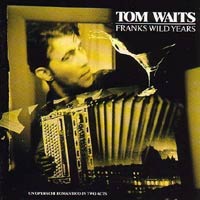 |
| Yo La Tengo: "New Wave Hot Dog" (Twin/Tone/Coyote, 1987) |
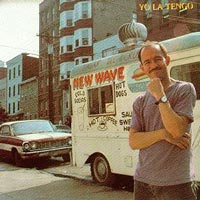 Mein Einstieg in den Yo La Tengo-Cosmos: dies ist das relativ
unbekannte zweite Album aus der Frühphase der Band. Damals wechselte
das Ehepaar Ira Kaplan (Gitarre) und Georgia Hubley (Schlagzeug)
gelegentlich ihre Bassisten (oder wurden von denen verlassen?). Auf
"New Wave Hot Dog" ist der - so weit ich weiß - Deutsche Stephan
Wichnewski zu hören. Aufgefallen ist mir die Platte damals (1988!)
ganz normal in einem Bocholter Plattenladen durch das schöne Cover,
während ich die Band zwar vom Namen her kannte, aber noch nichts von
ihnen gehört hatte. Auf dem Album ist die typische Mischung aus Krach
(z.B. "House Fall Down") und schönen Melodien (z.B. "No
Water" oder das Folkinstrumental "Lost In Bessemer")
bereits voll ausgebildet. Mit Lou Reeds "It's Alright (The
Way That You Live)" ein obskures Lied von 1966, das es nie auf
ein offizielles Velvet Underground-Album geschafft hat, gibt
es auch eine schöne Coverversion.
Mein Einstieg in den Yo La Tengo-Cosmos: dies ist das relativ
unbekannte zweite Album aus der Frühphase der Band. Damals wechselte
das Ehepaar Ira Kaplan (Gitarre) und Georgia Hubley (Schlagzeug)
gelegentlich ihre Bassisten (oder wurden von denen verlassen?). Auf
"New Wave Hot Dog" ist der - so weit ich weiß - Deutsche Stephan
Wichnewski zu hören. Aufgefallen ist mir die Platte damals (1988!)
ganz normal in einem Bocholter Plattenladen durch das schöne Cover,
während ich die Band zwar vom Namen her kannte, aber noch nichts von
ihnen gehört hatte. Auf dem Album ist die typische Mischung aus Krach
(z.B. "House Fall Down") und schönen Melodien (z.B. "No
Water" oder das Folkinstrumental "Lost In Bessemer")
bereits voll ausgebildet. Mit Lou Reeds "It's Alright (The
Way That You Live)" ein obskures Lied von 1966, das es nie auf
ein offizielles Velvet Underground-Album geschafft hat, gibt
es auch eine schöne Coverversion.
(19.05.2009)

 Mehr ...
Mehr ...
Ira Kaplan once described the first lineup of Yo La Tengo as "a band of timid folk-rockers," but the departure of guitarist Dave Schramm forced Kaplan to develop a stronger backbone, and he certainly put it to splendid use on the group's second album, New Wave Hot Dogs. The opener, a snappy dose of up-tempo angst called "Clunk," was decidedly more aggressive than anything on YLT's debut, Ride the Tiger, and if Kaplan hadn't exactly become an expert guitarist (in the purist's sense, he never would), his enthusiastic bashing and joyous embrace of feedback gave the song a passionate edge much of his earlier work had lacked, and his vocal displayed the fire and conviction of a true rock & roller. While New Wave Hot Dogs moves back and forth between skronk-friendly rockers and quieter, more poppy material (including a lovely cover of the Velvet Underground's then-unreleased "It's Alright [The Way That You Live]"), the band sounds firmer and more assured throughout the disc (even though the band was already on their third bassist by this time), and the songs showed Kaplan was coming into his own as a songwriter, with a gift for stick-in-the-ear melodies (both upbeat and contemplative) and witty lyrical conceits (how many albums can get laughs by listing America's greatest hits and name-checking Steve Albini?). Yo La Tengo hadn't reached full musical maturity on New Wave Hot Dogs, but it was a quantum leap over the sound of their debut, and set the stage for the music that would make them one of the most satisfying American bands of their time. (New Wave Hot Dogs is available on CD in tandem with the later EP President Yo La Tengo.)
(by Mark Deming, All Music Guide)
|
| "The Sound & The Fury" (Big Store, 1987) |
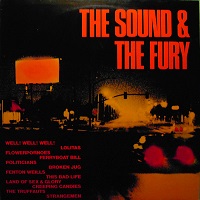 Viele meine damaligen deutschen Lieblingsgitarrenbands auf einer Platte: die Flowerpornoes
aus Dusburg, Well Well Well und Ferryboat Bill aus Waltrop,
The Strangemen aus Berlin, die Nürnberger Truffauts und noch einige mehr!
Viele meine damaligen deutschen Lieblingsgitarrenbands auf einer Platte: die Flowerpornoes
aus Dusburg, Well Well Well und Ferryboat Bill aus Waltrop,
The Strangemen aus Berlin, die Nürnberger Truffauts und noch einige mehr!
(25.12.2018)
|
 weitere Highlights ...
weitere Highlights ...
 An den Sound der Band musste ich mich erstmal gewöhnen. Als mir
ein Kollege in paar Jahre zuvor "Metal Circus" vorspielte,
war das für mich mitten in meiner Bluesphase nur unhörbarer
Punkrock. Aber Geschmäcker entwickeln sich weiter - genauso wie
Bands. Mit ihrem zweiten Doppelalbum (nach "Zen
Arcade") haben die beiden Sänger/Songschreiber Grant
Hart (Schlagzeuger) und Bob Mould
(Gitarrist) zusammen mit Greg Norton (Bassist und Schnurbartträger)
meines Erachtens ihr Meisterwerk abgeliefert!
An den Sound der Band musste ich mich erstmal gewöhnen. Als mir
ein Kollege in paar Jahre zuvor "Metal Circus" vorspielte,
war das für mich mitten in meiner Bluesphase nur unhörbarer
Punkrock. Aber Geschmäcker entwickeln sich weiter - genauso wie
Bands. Mit ihrem zweiten Doppelalbum (nach "Zen
Arcade") haben die beiden Sänger/Songschreiber Grant
Hart (Schlagzeuger) und Bob Mould
(Gitarrist) zusammen mit Greg Norton (Bassist und Schnurbartträger)
meines Erachtens ihr Meisterwerk abgeliefert!
 Mehr ...
Mehr ...
 Die Anfang der 80er in Cork/Irland von Sänger Cathal Coughlan
und Gitarrist Sean O'Hagan gegründete Band schaffte es wie
kaum eine andere Popgefühle und Independenthaltung authentisch
zusammenzubringen - und das auch noch in den grauenhaften Untiefen des
übelsten Jahrzehnts der Popmusik (Zeitrechnung seit den 60ern!).
Der große Erfolg blieb aus, auch als die Alben bei einer großen Plattenfirma
herauskamen. Allerdings konnte es mit den beiden nicht lange gut gehen
und sie gingen später getrennte Wege - und waren dabei sogar (etwas)
erfolgreicher: Coughlan mit Fatima Mansions und O'Hagan mit den
High Llamas.
Die Anfang der 80er in Cork/Irland von Sänger Cathal Coughlan
und Gitarrist Sean O'Hagan gegründete Band schaffte es wie
kaum eine andere Popgefühle und Independenthaltung authentisch
zusammenzubringen - und das auch noch in den grauenhaften Untiefen des
übelsten Jahrzehnts der Popmusik (Zeitrechnung seit den 60ern!).
Der große Erfolg blieb aus, auch als die Alben bei einer großen Plattenfirma
herauskamen. Allerdings konnte es mit den beiden nicht lange gut gehen
und sie gingen später getrennte Wege - und waren dabei sogar (etwas)
erfolgreicher: Coughlan mit Fatima Mansions und O'Hagan mit den
High Llamas.
 Allstar-Projekt des ehemaligen Trommlers der Feelies,
Anton Fier, zusammen mit Bill Laswell. Hab ich mir damals
gekauft, weil Richard Thompson mit dabei ist. Außerdem Henry
Kaiser, Syd Straw, Michael Stipe (R.E.M.),
Johnny Lydon (P.I.L., Sex Pistols), Jack Bruce, Carla
Bley, Arto Lindsey und viele andere.
Allstar-Projekt des ehemaligen Trommlers der Feelies,
Anton Fier, zusammen mit Bill Laswell. Hab ich mir damals
gekauft, weil Richard Thompson mit dabei ist. Außerdem Henry
Kaiser, Syd Straw, Michael Stipe (R.E.M.),
Johnny Lydon (P.I.L., Sex Pistols), Jack Bruce, Carla
Bley, Arto Lindsey und viele andere.
 Vier Lieder spielte Nick Drake noch kurz vor seinem Tod 1974 ein, die erstmalig
1979 auf der 3fach-LP-Box FRUIT TREE als Anhang zum dritten
Album "Pink Moon" zu
hören waren, darunter auch "Voice From The Mountain",
eines meiner Lieblingslieder von ihm, oft auf der Setliste von Waiting
For Louise zu finden. Der Rest, inklusive ein paar interessanter
Outtakes aus den Five Leaves Left-Sessions,
ist hier erstmalig zu hören. Besonders erwähnenswert ist eine
frühe Version von "Fly", echtes "Homerecording"
von 1969, und eine alternative Version von den "Thoughts Of Mary
Jane" mit Richard Thompson an der Gitarre. Also kein echtes
"neues" Album, aber ein Muss für Fans dieses wunderbaren
englischen Sängers, Songschreibers und Gitarristen.
Vier Lieder spielte Nick Drake noch kurz vor seinem Tod 1974 ein, die erstmalig
1979 auf der 3fach-LP-Box FRUIT TREE als Anhang zum dritten
Album "Pink Moon" zu
hören waren, darunter auch "Voice From The Mountain",
eines meiner Lieblingslieder von ihm, oft auf der Setliste von Waiting
For Louise zu finden. Der Rest, inklusive ein paar interessanter
Outtakes aus den Five Leaves Left-Sessions,
ist hier erstmalig zu hören. Besonders erwähnenswert ist eine
frühe Version von "Fly", echtes "Homerecording"
von 1969, und eine alternative Version von den "Thoughts Of Mary
Jane" mit Richard Thompson an der Gitarre. Also kein echtes
"neues" Album, aber ein Muss für Fans dieses wunderbaren
englischen Sängers, Songschreibers und Gitarristen.
 Mehr ...
Mehr ...
 Das zweite, noch englischsprachige Album der Band um den "Bestsellerautor"
Sven Regener, die später eine der wichtigsten heimischen
Bands mit unpeinlichen deutschen Texte werden sollte. Die Musik (schrammeliger
Gitarrenrock mit Trompeteneinlagen) ist hier allerdings schon voll da.
Produziert immerhin vom legendären John Cale, was damals
durchaus einem "Ritterschlag" für eine deutsche Band
gleichkam!
Das zweite, noch englischsprachige Album der Band um den "Bestsellerautor"
Sven Regener, die später eine der wichtigsten heimischen
Bands mit unpeinlichen deutschen Texte werden sollte. Die Musik (schrammeliger
Gitarrenrock mit Trompeteneinlagen) ist hier allerdings schon voll da.
Produziert immerhin vom legendären John Cale, was damals
durchaus einem "Ritterschlag" für eine deutsche Band
gleichkam!
 Eine ziemlich irre Truppe, die sich zu diesem Projekt zusammengefunden hatte:
John French war mal Drummer bei Captain
Beefheart. Fred Frith gilt als einer der wichtigsten englischen
Avantgardegitarristen und spielt hier "nur" den Bass. Henry
Kaiser ist einer der bekanntesten amerikanischen Avantgardegitarristen.
Schließlich und endlich mein Held, Richard Thompson, der
zwar eigentlich aus der Folkrockecke stammt (er spielte auf den wegweisenden
Fairport Convention-Alben Unhalfbricking
und Liege & Lief), aber scheinbar
mühelos über den Tellerrand der Folkies gucken kann.
Eine ziemlich irre Truppe, die sich zu diesem Projekt zusammengefunden hatte:
John French war mal Drummer bei Captain
Beefheart. Fred Frith gilt als einer der wichtigsten englischen
Avantgardegitarristen und spielt hier "nur" den Bass. Henry
Kaiser ist einer der bekanntesten amerikanischen Avantgardegitarristen.
Schließlich und endlich mein Held, Richard Thompson, der
zwar eigentlich aus der Folkrockecke stammt (er spielte auf den wegweisenden
Fairport Convention-Alben Unhalfbricking
und Liege & Lief), aber scheinbar
mühelos über den Tellerrand der Folkies gucken kann.  Das Gipfeltreffen der Firstladies des Countryrocks! Solche Veranstaltungen
können natürlich schief gehen, aber hier stimmen das Songmaterial
(u. a. "Telling Me Lies" von Linda Thompson und "My Dear
Companion" von Jean Ritchie), die instrumentale Begleitung (u.a.
durch David Lindley, Albert Lee, Mark O'Connor
und Ry Cooder) - und natürlich vor allem die Gesangsleistung
des Damentrios.
Das Gipfeltreffen der Firstladies des Countryrocks! Solche Veranstaltungen
können natürlich schief gehen, aber hier stimmen das Songmaterial
(u. a. "Telling Me Lies" von Linda Thompson und "My Dear
Companion" von Jean Ritchie), die instrumentale Begleitung (u.a.
durch David Lindley, Albert Lee, Mark O'Connor
und Ry Cooder) - und natürlich vor allem die Gesangsleistung
des Damentrios.
 Obwohl ich kein Prince-Fan bin, ist das auch für mich ein wichtiges Album.
Danach habe ich aber wieder komplett das Interesse an seiner Musik verloren.
Obwohl ich kein Prince-Fan bin, ist das auch für mich ein wichtiges Album.
Danach habe ich aber wieder komplett das Interesse an seiner Musik verloren.
 Das fantastische Debüt des Ex-Waterboys
Karl Wallinger unter dem Pseudonym "World Party" macht
deutlich, dass er als Begleiter für Mike Scott verschenkt
war. Endlich konnte er sich nicht nur als Multi-Instrumentalist, sondern
auch als Songschreiber profilieren.
Das fantastische Debüt des Ex-Waterboys
Karl Wallinger unter dem Pseudonym "World Party" macht
deutlich, dass er als Begleiter für Mike Scott verschenkt
war. Endlich konnte er sich nicht nur als Multi-Instrumentalist, sondern
auch als Songschreiber profilieren.
 Die Karriere von Gene Clark außerhalb der Byrds
war unter kommerziellen Gesichtspunkten ein Desaster, wobei das nie
an seinen musikalischen Qualitäten lag. Nach dem Ausstieg bei den
Byrds nahm er u. a. 2 Duettplatten
mit dem Banjospieler Doug Dillard auf ("The
Fantastic Expeditions Of Dillard & Clark"), war dadurch
einer der Countryrock-Pioniere, ohne dafür große Anerkennung zu
bekommen. Gelegentliche Versuche einer Solokarriere bei großen Plattenfirmen
lieferten zwar meist wunderschöne Alben (vor allem "White
Light", 1971 für A&M, und das Meisterwerk "No
Other", 1974 bei Elektra/Asylum erschienen), ohne ihm aber
den Durchbruch zu verschaffen. Mitte der 80er war er dann mit einer
nach Einschätzung vieler Leute zweitklassiger Band als "Byrds"
auf Tour, zum ärger von McGuinn, Hillman und Crosby.
Anschließend tat er sich mit Carla Olson, der Sängerin der
Textones, zusammen, um dieses schöne Akustikalbum aufzunehmen,
das deutlich besser war als alles, was er nach "No
Other" aufgenommen hatte. Mit dabei u. a. sein alter Byrd-Gefährte
Chris Hillman mit einem schönen Mandolinensolo (offensichtlich
waren die alten Kollegen dann doch nicht ganz so verärgert!) und
Stephen McCarthy von den Byrds beeinflussten "Long
Ryders" (Nomen Est Omen!). Besonders gut gefällt mir neben
den neuen Clark-Kompositionen vor allem die Coverversion von Gram
Parsons "I'm Your Toy" mit wunderschönen Duettgesang.
Traurigerweise beendete Clark seine Plattenkarriere also mit einem Duettalbum,
denn wenige Jahre später (1991?) verstarb er, wie viele Rock'n'Roller,
viel zu jung.
Die Karriere von Gene Clark außerhalb der Byrds
war unter kommerziellen Gesichtspunkten ein Desaster, wobei das nie
an seinen musikalischen Qualitäten lag. Nach dem Ausstieg bei den
Byrds nahm er u. a. 2 Duettplatten
mit dem Banjospieler Doug Dillard auf ("The
Fantastic Expeditions Of Dillard & Clark"), war dadurch
einer der Countryrock-Pioniere, ohne dafür große Anerkennung zu
bekommen. Gelegentliche Versuche einer Solokarriere bei großen Plattenfirmen
lieferten zwar meist wunderschöne Alben (vor allem "White
Light", 1971 für A&M, und das Meisterwerk "No
Other", 1974 bei Elektra/Asylum erschienen), ohne ihm aber
den Durchbruch zu verschaffen. Mitte der 80er war er dann mit einer
nach Einschätzung vieler Leute zweitklassiger Band als "Byrds"
auf Tour, zum ärger von McGuinn, Hillman und Crosby.
Anschließend tat er sich mit Carla Olson, der Sängerin der
Textones, zusammen, um dieses schöne Akustikalbum aufzunehmen,
das deutlich besser war als alles, was er nach "No
Other" aufgenommen hatte. Mit dabei u. a. sein alter Byrd-Gefährte
Chris Hillman mit einem schönen Mandolinensolo (offensichtlich
waren die alten Kollegen dann doch nicht ganz so verärgert!) und
Stephen McCarthy von den Byrds beeinflussten "Long
Ryders" (Nomen Est Omen!). Besonders gut gefällt mir neben
den neuen Clark-Kompositionen vor allem die Coverversion von Gram
Parsons "I'm Your Toy" mit wunderschönen Duettgesang.
Traurigerweise beendete Clark seine Plattenkarriere also mit einem Duettalbum,
denn wenige Jahre später (1991?) verstarb er, wie viele Rock'n'Roller,
viel zu jung.  1987 veröffentlichten die Meat Puppets gleich zwei Geniestreiche:
zuerst Mirage und dann wenige Monate später noch Huevos.
Für mich eines der besten Gitarre-Bass-Drums-Trios aller Zeiten!
1987 veröffentlichten die Meat Puppets gleich zwei Geniestreiche:
zuerst Mirage und dann wenige Monate später noch Huevos.
Für mich eines der besten Gitarre-Bass-Drums-Trios aller Zeiten!
 Mehr ...
Mehr ...
 Diese Platte ist inzwischen ein rares Schätzchen. The King Of Luxembourg
ist eines der vielen Pseudonyme, die von Simon Fisher-Turner
verwendet wurden. Er gründete zu Punkrockzeiten mit Matt Johnson
The The und arbeitet heutzutage vor allem als Filmkomponist.
Auf dem englischen Kultlabel él nahm er mit Unterstützung
vieler Gastmusiker unter diesem Pseudonym zwei Alben auf. Auf "Royal
Bastard" bin ich damals gestoßen, weil fast die kompletten Go-Betweens
mitmischen: Robert Forster, Grant McLennan, Amanda
Brown und Lindy Morrison. Als Songschreiber und Keyboarder
ist der in London beheimate Franzose Louis Philippe dabei, der
ebenfalls bei "èl" Platten veröffentlicht. Die
Musik ist mit den Begriffen POP und EXZENTRIK noch am ehesten zu beschreiben,
manchmal erinnert sie ein wenig an PET
SOUNDS (wirklich!). Brian Wilsons aktuelle Begleitband Wondermints
könnte glatt dabei gewesen sein, wären seitdem nicht bereits
15 Jahre vergangen. Auf jeden Fall ist interessant zu vermerken, dass
sowohl Louis Philippe, der König von Luxemburg, als auch die Wondermints
in Japan am erfolgreichsten sind bzw. waren. Die Platte enthält
übrigens viele geschmackvolle bzw. exzentrische Coverversionen:
"A Picture Of Dorian Gray" (Dan Treacy/T.V.Personalities),
"Poptones" (Johnny Lydon's P.I.L.), "Something For Sophia
Loren" (Henry Mancini) und "Happy Together" (The Turtles).
Diese Platte ist inzwischen ein rares Schätzchen. The King Of Luxembourg
ist eines der vielen Pseudonyme, die von Simon Fisher-Turner
verwendet wurden. Er gründete zu Punkrockzeiten mit Matt Johnson
The The und arbeitet heutzutage vor allem als Filmkomponist.
Auf dem englischen Kultlabel él nahm er mit Unterstützung
vieler Gastmusiker unter diesem Pseudonym zwei Alben auf. Auf "Royal
Bastard" bin ich damals gestoßen, weil fast die kompletten Go-Betweens
mitmischen: Robert Forster, Grant McLennan, Amanda
Brown und Lindy Morrison. Als Songschreiber und Keyboarder
ist der in London beheimate Franzose Louis Philippe dabei, der
ebenfalls bei "èl" Platten veröffentlicht. Die
Musik ist mit den Begriffen POP und EXZENTRIK noch am ehesten zu beschreiben,
manchmal erinnert sie ein wenig an PET
SOUNDS (wirklich!). Brian Wilsons aktuelle Begleitband Wondermints
könnte glatt dabei gewesen sein, wären seitdem nicht bereits
15 Jahre vergangen. Auf jeden Fall ist interessant zu vermerken, dass
sowohl Louis Philippe, der König von Luxemburg, als auch die Wondermints
in Japan am erfolgreichsten sind bzw. waren. Die Platte enthält
übrigens viele geschmackvolle bzw. exzentrische Coverversionen:
"A Picture Of Dorian Gray" (Dan Treacy/T.V.Personalities),
"Poptones" (Johnny Lydon's P.I.L.), "Something For Sophia
Loren" (Henry Mancini) und "Happy Together" (The Turtles).
 Auch mit ihrem zweiten Album ist die Dame wieder sehr erfolgreich. Ebenso
mit der Single "Luka" (die dann später von Evan Dando
und seinen Lemonheads verwurstet wird).
Zu ihrem allergrößten Hit wird dann aber drei Jahre später
"Tom's Diner" in der Remix-Version von einem gewissen D.N.A.,
der unter das unscheinbare á-capella-Lied einfach einen Beat
legt: fertig ist der Hit!
Auch mit ihrem zweiten Album ist die Dame wieder sehr erfolgreich. Ebenso
mit der Single "Luka" (die dann später von Evan Dando
und seinen Lemonheads verwurstet wird).
Zu ihrem allergrößten Hit wird dann aber drei Jahre später
"Tom's Diner" in der Remix-Version von einem gewissen D.N.A.,
der unter das unscheinbare á-capella-Lied einfach einen Beat
legt: fertig ist der Hit!
 Welch ein grandioses Comebackalbum! 4 Jahre nach dem etwas untergegangenem
Album "A Child's Adventure" und fast 10 Jahre nach dem beeindruckenden
"Broken English" schafft
diese Frau zusammen mit dem Jazzproduzenten Hal Willner ein neues
Meisterwerk. Dabei spielen drei wichtige Zutaten eine Rolle: als erstes
natürlich die einzigartige Stimme von "der Faithful"
(ja, so spricht man über echte Diven!), dann die musikalische Arbeit
von Hal Willner und seinen Musikern (u. a. Jazzgitarrist Bill Frisell,
Garth Hudson von The Band
am Akkordeon, Bassist Fernando Saunders von der Lou Reed-Band
und Dr. John bzw. Sharon Freeman am Piano), aber zum dritten
auch die sehr geschmackvolle Songauswahl: neben Klassikern aus den 30ern
hören wir alten Folkblues ("Sign Of Judgement" von Kid
Prince Moore mit tollem Dobro von Frisell), "I'll Keep It With
Mine" von Bob Dylan (eigentlich von Dylan für Nico
geschrieben und auf deren Debütalbum "Chelsea
Girl" zu finden) , ein Remake ihres eigenen Hits "As Tears
Go By", den Jagger/Richards für sie geschrieben hatten,
sowie den Titelsong, den Tom Waits extra für dieses Album
geschrieben hat.
Welch ein grandioses Comebackalbum! 4 Jahre nach dem etwas untergegangenem
Album "A Child's Adventure" und fast 10 Jahre nach dem beeindruckenden
"Broken English" schafft
diese Frau zusammen mit dem Jazzproduzenten Hal Willner ein neues
Meisterwerk. Dabei spielen drei wichtige Zutaten eine Rolle: als erstes
natürlich die einzigartige Stimme von "der Faithful"
(ja, so spricht man über echte Diven!), dann die musikalische Arbeit
von Hal Willner und seinen Musikern (u. a. Jazzgitarrist Bill Frisell,
Garth Hudson von The Band
am Akkordeon, Bassist Fernando Saunders von der Lou Reed-Band
und Dr. John bzw. Sharon Freeman am Piano), aber zum dritten
auch die sehr geschmackvolle Songauswahl: neben Klassikern aus den 30ern
hören wir alten Folkblues ("Sign Of Judgement" von Kid
Prince Moore mit tollem Dobro von Frisell), "I'll Keep It With
Mine" von Bob Dylan (eigentlich von Dylan für Nico
geschrieben und auf deren Debütalbum "Chelsea
Girl" zu finden) , ein Remake ihres eigenen Hits "As Tears
Go By", den Jagger/Richards für sie geschrieben hatten,
sowie den Titelsong, den Tom Waits extra für dieses Album
geschrieben hat. Mein Einstieg in die Welt der Go-Betweens war ein Fernsehauftritt im Frühjahr
87: Sonntag morgen in der ARD, die Sendung hieß glaube ich "Kaffee
Oder Tee" (oder so ähnlich). Die Woche darauf habe ich mir
die Maxi "Right Here" gekauft und es war um mich geschehen.
Die zweite Maxi "Cut It Out" war dann ein recht merkwürdiges
Discostück. Aber dann - endlich - erschien das Album "Tallulah",
bis heute eine meiner Lieblingsplatten. In den folgenden Monaten habe
ich mir dann alle anderen verfügbaren Platten von Robert Forster,
Grant McLennan und Co. besorgt. Erstaunlich, was bis dahin an
mir alles vorbeigegangen war! Mein Lieblingslied der Platte:
"The Clarke Sisters",
gerne auch mit W4L gespielt.
Mein Einstieg in die Welt der Go-Betweens war ein Fernsehauftritt im Frühjahr
87: Sonntag morgen in der ARD, die Sendung hieß glaube ich "Kaffee
Oder Tee" (oder so ähnlich). Die Woche darauf habe ich mir
die Maxi "Right Here" gekauft und es war um mich geschehen.
Die zweite Maxi "Cut It Out" war dann ein recht merkwürdiges
Discostück. Aber dann - endlich - erschien das Album "Tallulah",
bis heute eine meiner Lieblingsplatten. In den folgenden Monaten habe
ich mir dann alle anderen verfügbaren Platten von Robert Forster,
Grant McLennan und Co. besorgt. Erstaunlich, was bis dahin an
mir alles vorbeigegangen war! Mein Lieblingslied der Platte:
"The Clarke Sisters",
gerne auch mit W4L gespielt.
 Mehr ...
Mehr ...
 Mal wieder ein wunderbares Album von L.A.'s bestem singenden Zyniker neben
Randy Newman. Dieses mal sind vor allem die Begleiter erwähnenswert:
Bill Berry, Mike Mills und Peter Buck von R.E.M.,
unterstützt u. a. von Neil Young, Bob Dylan (ein
seltener Gast auf den Platten anderer Leute!) , David Lindley,
Michael Stipe, Jennifer Warnes, Don Henley (Eagles)
und Brian Setzer (Stray Cats). Trotz der ganzen Superstars bleibt
Warren mit seiner Stimme und seinen Songs klar Chef im Ring. Mit den
drei R.E.M.-Musikern spielte er dann 1990 unter dem merkwürdigen
Namen Hindu Love Gods noch eine genauso merkwürdige
Blues(!)-Platte ein.
Mal wieder ein wunderbares Album von L.A.'s bestem singenden Zyniker neben
Randy Newman. Dieses mal sind vor allem die Begleiter erwähnenswert:
Bill Berry, Mike Mills und Peter Buck von R.E.M.,
unterstützt u. a. von Neil Young, Bob Dylan (ein
seltener Gast auf den Platten anderer Leute!) , David Lindley,
Michael Stipe, Jennifer Warnes, Don Henley (Eagles)
und Brian Setzer (Stray Cats). Trotz der ganzen Superstars bleibt
Warren mit seiner Stimme und seinen Songs klar Chef im Ring. Mit den
drei R.E.M.-Musikern spielte er dann 1990 unter dem merkwürdigen
Namen Hindu Love Gods noch eine genauso merkwürdige
Blues(!)-Platte ein. Der Vorläufer zum genialen Daydream Nation!
Der Vorläufer zum genialen Daydream Nation!
 Mehr ...
Mehr ...
 Nach dem schon sehr schönen Debüt
jetzt der Durchbruch von J Mascis und seinen beiden Begleitern
- endlich bei SST, dem angesagtesten Label der Saison!
Nach dem schon sehr schönen Debüt
jetzt der Durchbruch von J Mascis und seinen beiden Begleitern
- endlich bei SST, dem angesagtesten Label der Saison! Lost & Found!
Lost & Found! Mehr ...
Mehr ...
 Da hat mein Herz als alter Deadhead gelacht: nach 7 Jahren Unterbrechung
endlich wieder ein Studioalbum mit neuem Songmaterial - und dann auch
noch wirklich gutes: vor allem "Black
Muddy River", einer meiner absoluter Jerry Garcia/Robert
Hunter-Favouriten, deshalb auch von Waiting For Louise auf "From
6 To 5" gecovert. Dann noch die Hitsingle "Touch Of Grey",
tatsächlich bis auf Platz 9 der US-Singlecharts (das Album kam
sogar bis auf Platz 6!). Zwei gute Bob Weir Songs ("Hell
In A Bucket" und der Livekracher "Throwing Stones").
Nur der Gesangsauftritt des Keyboarders Brent Mydland ("Tons
Of Steel") ist stimmlich gewöhnungsbedürftig und vom
Sound zu sehr Mainstream.
Da hat mein Herz als alter Deadhead gelacht: nach 7 Jahren Unterbrechung
endlich wieder ein Studioalbum mit neuem Songmaterial - und dann auch
noch wirklich gutes: vor allem "Black
Muddy River", einer meiner absoluter Jerry Garcia/Robert
Hunter-Favouriten, deshalb auch von Waiting For Louise auf "From
6 To 5" gecovert. Dann noch die Hitsingle "Touch Of Grey",
tatsächlich bis auf Platz 9 der US-Singlecharts (das Album kam
sogar bis auf Platz 6!). Zwei gute Bob Weir Songs ("Hell
In A Bucket" und der Livekracher "Throwing Stones").
Nur der Gesangsauftritt des Keyboarders Brent Mydland ("Tons
Of Steel") ist stimmlich gewöhnungsbedürftig und vom
Sound zu sehr Mainstream.
 Mehr ...
Mehr ...
 Eigentlich sind die 80er nach meiner Meinung nicht die beste Zeit für
guten, akustischen, also "klassischen" Jazz in Quartettbesetzung.
Es hat auch 10 Jahre gedauert, bis ich diese CD entdeckt und zu schätzen
gelernt habe...
Eigentlich sind die 80er nach meiner Meinung nicht die beste Zeit für
guten, akustischen, also "klassischen" Jazz in Quartettbesetzung.
Es hat auch 10 Jahre gedauert, bis ich diese CD entdeckt und zu schätzen
gelernt habe...
 Mehr ...
Mehr ...
 Wie bei vielen meiner langjährigen Lieblingskünstler sind
die 80er qualitativ eher durchwachsen, aber mit "Angel Band"
gelingt Emmylou wieder mal ein Klassealbum. Die Begleitband (Emory
Gordy am Bass, Vince Gill an Gitarre und Mandoline, Carl
Jackson meist am Banjo) spielt fast puren Bluegrass, gelegentlich
von Gaststars wie Multiinstrumentalist Mark O'Connor und den
Dobrospielern Mike Auldridge und Jerry Douglas unterstützt.
Das Songmaterial ist meist alt: Folksongs, Gospel und Stücke der
Stanley-Brothers und anderer Altvorderen. Alles in allem sehr gelungen.
Wie bei vielen meiner langjährigen Lieblingskünstler sind
die 80er qualitativ eher durchwachsen, aber mit "Angel Band"
gelingt Emmylou wieder mal ein Klassealbum. Die Begleitband (Emory
Gordy am Bass, Vince Gill an Gitarre und Mandoline, Carl
Jackson meist am Banjo) spielt fast puren Bluegrass, gelegentlich
von Gaststars wie Multiinstrumentalist Mark O'Connor und den
Dobrospielern Mike Auldridge und Jerry Douglas unterstützt.
Das Songmaterial ist meist alt: Folksongs, Gospel und Stücke der
Stanley-Brothers und anderer Altvorderen. Alles in allem sehr gelungen. "Taking drugs to make music to take drugs to" - so
nennen Spacemen 3 ihre eigene Arbeitsweise - aber vergnüglich hören
kann man das Ganze auch völlig nüchtern: so ging's mir auch
schon immer bei Hawkwind!
"Taking drugs to make music to take drugs to" - so
nennen Spacemen 3 ihre eigene Arbeitsweise - aber vergnüglich hören
kann man das Ganze auch völlig nüchtern: so ging's mir auch
schon immer bei Hawkwind!
 Mehr ...
Mehr ...
 Der Durchbruch von Michael Stipe, Peter Buck, Mike Mills
und Bill Berry mit dem Top-Ten-Hit "The One I Love".
Weitere Smashhits: "Finest Worksong" und "It's The End
Of The World As We Know It (And I Feel Fine)". Danach ging es weg
von I.R.S. hin zu Warner und die Weltkarriere begann.
Der Durchbruch von Michael Stipe, Peter Buck, Mike Mills
und Bill Berry mit dem Top-Ten-Hit "The One I Love".
Weitere Smashhits: "Finest Worksong" und "It's The End
Of The World As We Know It (And I Feel Fine)". Danach ging es weg
von I.R.S. hin zu Warner und die Weltkarriere begann.  Eine wunderbare Band aus Neuengland, die damals oft mit R.E.M. verglichen
wurde und vielleicht auch deren Potential hatte. Sänger Mark
Mulcahy und Gitarrist Ray Neal arbeiteten im Duo und mit
wechselnden Rhythmusgruppen, durften 1992 sogar ein Album beim Major
Polydor veröffentlichen, schafften aber nie den großen Durchbruch.
"Surprise" erschien beim damals hippen Label "Rough Trade"
und war meine erste Begegnung mit der Band. Ich erinnere mich noch an
einen genialen Duoauftritt der beiden Hauptprotagonisten ca. 1990 im
Vorprogramm der ebenfalls genialen Pere
Ubu in der Bochumer Zeche! Nach meinem Wissensstand sind sie in
ihrer Heimatbasis Neuengland auch heute noch (oder wieder?) aktiv.
Eine wunderbare Band aus Neuengland, die damals oft mit R.E.M. verglichen
wurde und vielleicht auch deren Potential hatte. Sänger Mark
Mulcahy und Gitarrist Ray Neal arbeiteten im Duo und mit
wechselnden Rhythmusgruppen, durften 1992 sogar ein Album beim Major
Polydor veröffentlichen, schafften aber nie den großen Durchbruch.
"Surprise" erschien beim damals hippen Label "Rough Trade"
und war meine erste Begegnung mit der Band. Ich erinnere mich noch an
einen genialen Duoauftritt der beiden Hauptprotagonisten ca. 1990 im
Vorprogramm der ebenfalls genialen Pere
Ubu in der Bochumer Zeche! Nach meinem Wissensstand sind sie in
ihrer Heimatbasis Neuengland auch heute noch (oder wieder?) aktiv.
 Mehr ...
Mehr ...
 Rares Teil - und soweit ich weiß immer noch nicht auf CD wiederveröffentlichte
EP (so nannte man damals Vinylplatten die länger als Maxisingles,
aber kürzer als LPs sind) dieser Schweizer Band, die sich der Musik
von Tim Buckley verschrieben hat. In einer jazzigen Besetzung
mit mir durchweg unbekannten Musikern (Schlagzeuger, 2 E/A-Bassisten,
Keyboarder, Saxofonist, Sänger/Gitarrist und Sologitarrist) werden
6 Buckley-Kompositionen interpretiert:
Rares Teil - und soweit ich weiß immer noch nicht auf CD wiederveröffentlichte
EP (so nannte man damals Vinylplatten die länger als Maxisingles,
aber kürzer als LPs sind) dieser Schweizer Band, die sich der Musik
von Tim Buckley verschrieben hat. In einer jazzigen Besetzung
mit mir durchweg unbekannten Musikern (Schlagzeuger, 2 E/A-Bassisten,
Keyboarder, Saxofonist, Sänger/Gitarrist und Sologitarrist) werden
6 Buckley-Kompositionen interpretiert:
 Mehr ...
Mehr ...
 Ganz klar ein Comeback der besseren Art!
Ganz klar ein Comeback der besseren Art!
 Mehr ...
Mehr ...
 Ein Zufallsentdeckung wegen des schönen Covers. Bald danach meine
Lieblings-SST-Band. Vielleicht sogar mein Lieblings-Gitarrentrio überhaupt.
Ein Zufallsentdeckung wegen des schönen Covers. Bald danach meine
Lieblings-SST-Band. Vielleicht sogar mein Lieblings-Gitarrentrio überhaupt.
 Mehr ...
Mehr ...
 Herbst '87 betrat ich völlig unvorbereitet Lothar Kochs Plattenladen in
Wesel (den es immer noch gibt!), als dort diese EP lief: einen solchen
Sound hatte ich noch nie gehört! Die Band um den Sänger, Gitarristen
und Songschreiber Black Francis (der sich später Frank
Black nannte und in Wahrheit noch ganz anders heißt) und die Bassistin
Kim Deal (später mit den Breeders erfolgreich) brachte
auf geniale Art Krach und Melodie zusammen. Angeblich waren sie das
große Vorbild von Kurt Cobain, sodass es Nirvana ohne die Pixies
vielleicht nie gegeben hätte. Herrn Black ist das soweit ich weiß
scheißegal, obwohl er sicherlich zu einer Karriere à la Nirvana
nicht nein gesagt hätte.
Herbst '87 betrat ich völlig unvorbereitet Lothar Kochs Plattenladen in
Wesel (den es immer noch gibt!), als dort diese EP lief: einen solchen
Sound hatte ich noch nie gehört! Die Band um den Sänger, Gitarristen
und Songschreiber Black Francis (der sich später Frank
Black nannte und in Wahrheit noch ganz anders heißt) und die Bassistin
Kim Deal (später mit den Breeders erfolgreich) brachte
auf geniale Art Krach und Melodie zusammen. Angeblich waren sie das
große Vorbild von Kurt Cobain, sodass es Nirvana ohne die Pixies
vielleicht nie gegeben hätte. Herrn Black ist das soweit ich weiß
scheißegal, obwohl er sicherlich zu einer Karriere à la Nirvana
nicht nein gesagt hätte. Ich kann mich noch gut erinnern, wie Alan Bangs damals im Niteflight
fast die ganze Platte gespielt hat: ich war total begeistert. Leider
kam danach nicht mehr viel (nur noch das Album "Storeyville").
Damals dachte ich: "Meisterwerk", aber irgendwie hat sich
meine Einschätzung allgemein nicht durchgesetzt!
Ich kann mich noch gut erinnern, wie Alan Bangs damals im Niteflight
fast die ganze Platte gespielt hat: ich war total begeistert. Leider
kam danach nicht mehr viel (nur noch das Album "Storeyville").
Damals dachte ich: "Meisterwerk", aber irgendwie hat sich
meine Einschätzung allgemein nicht durchgesetzt!
 Mehr ...
Mehr ...
 Eine meiner ersten CDs, keine Ahnung mehr, wie ich damals auf diese
Platte kam, da ich nie ein Fan der Band Japan
war (und sie quasi erst nach diesem Album für mich entdeckt habe!).
Vielleicht wegen des schönen Covers? Egal, denn letztendlich zählt
die Musik - und die ist hier mit dem Wort "schön" nur
völlig unzureichend beschrieben. Irgendwo liegt das Ganze zwischen
dem Sound seiner alten Band, Jazz, Folk und wer-weiß-was-noch. Sylvian
selber versucht sich als Gitarrist und Keyboarder und wird unterstützt
vom japanischen Soundtüftler Ryuichi Sakamoto, Englands
Basslegende Danny Thompson, Gitarrist Phil Palmer und
seinem Bruder und Ex-Japan-Mitstreiter Steve Jansen am Schlagzeug.
Eine meiner ersten CDs, keine Ahnung mehr, wie ich damals auf diese
Platte kam, da ich nie ein Fan der Band Japan
war (und sie quasi erst nach diesem Album für mich entdeckt habe!).
Vielleicht wegen des schönen Covers? Egal, denn letztendlich zählt
die Musik - und die ist hier mit dem Wort "schön" nur
völlig unzureichend beschrieben. Irgendwo liegt das Ganze zwischen
dem Sound seiner alten Band, Jazz, Folk und wer-weiß-was-noch. Sylvian
selber versucht sich als Gitarrist und Keyboarder und wird unterstützt
vom japanischen Soundtüftler Ryuichi Sakamoto, Englands
Basslegende Danny Thompson, Gitarrist Phil Palmer und
seinem Bruder und Ex-Japan-Mitstreiter Steve Jansen am Schlagzeug.
 Mehr ...
Mehr ...
 Es war natürlich extrem clever und werbewirksam, Nordirlands Fußball-Legende
hier in Bild und Titel zu huldigen. Man konnte sich dieser Platte zumindest
im Alternative-Marktsegment damals kaum entziehen. Aber schließlich
hat die Platte dann all ihre Aufmerksamkeit auch gerechtfertigt: Sänger,
Gitarrist und Songschreiber David Gedge lieferte mit seiner Band
Schrammelpop in Perfektion ab, meist in einem hohen Tempo mit reichlich
Punkgefühl.
Es war natürlich extrem clever und werbewirksam, Nordirlands Fußball-Legende
hier in Bild und Titel zu huldigen. Man konnte sich dieser Platte zumindest
im Alternative-Marktsegment damals kaum entziehen. Aber schließlich
hat die Platte dann all ihre Aufmerksamkeit auch gerechtfertigt: Sänger,
Gitarrist und Songschreiber David Gedge lieferte mit seiner Band
Schrammelpop in Perfektion ab, meist in einem hohen Tempo mit reichlich
Punkgefühl.
 Mehr ...
Mehr ...
 Mehr ...
Mehr ...
 Die australische Truppe um den Sänger, Gitarristen und Songschreiber
David McComb unterschrieb nach mehreren Independent-Achtungserfolgen
beim englischen Island-Label und zog auch auf die Insel. Leider
blieb der große Erfolg genauso wie bei den Go-Betweens
aus und nach dem nächsten Album "The
Black Swan" war schon wieder alles vorbei. Dabei ist zumindest
"Calenture" ein wunderbares Album geworden. Besonders schön
ist die Singleauskopplung "Bury Me Deep In Love", mit der
die Band damals sogar in der ZDF-Drehscheibe zum Playback auftrat.
Auf jener Deutschlandtournee spielte die Band auch bei uns (das war
entweder in der Zeche Bochum oder Zeche Carl in Essen)
und ich konnte zum ersten mal in meinem Leben live einem Pedalsteelgitarristen
bei der Arbeit zusehen und zuhören: geil!
Die australische Truppe um den Sänger, Gitarristen und Songschreiber
David McComb unterschrieb nach mehreren Independent-Achtungserfolgen
beim englischen Island-Label und zog auch auf die Insel. Leider
blieb der große Erfolg genauso wie bei den Go-Betweens
aus und nach dem nächsten Album "The
Black Swan" war schon wieder alles vorbei. Dabei ist zumindest
"Calenture" ein wunderbares Album geworden. Besonders schön
ist die Singleauskopplung "Bury Me Deep In Love", mit der
die Band damals sogar in der ZDF-Drehscheibe zum Playback auftrat.
Auf jener Deutschlandtournee spielte die Band auch bei uns (das war
entweder in der Zeche Bochum oder Zeche Carl in Essen)
und ich konnte zum ersten mal in meinem Leben live einem Pedalsteelgitarristen
bei der Arbeit zusehen und zuhören: geil!
 Mehr ...
Mehr ...
 Nach fast 1ojähriger Pause gab es 1987 endlich wieder Lebenszeichen
des Ausnahme-Songschreibers: zuerst Liveaufnahmen von 1985 ("Live
& Obscure") und dann zur großen überraschung ein
Studioalbum mit neuen Songs, dieses mal von den Nashville-Legenden Jack
Clement und Jim Rooney produziert. Zu den neuen Liedern gehören
das wunderschöne "Snowin' On Raton" (das erste Lied,
was ich je von TVZ hörte, nachts bei Alan Bangs im Night
Flight!) und "Buckskin Stallion Blues". Von "For The
Sake Of The Song" ist es bereits die dritte Studioversion nach
1968 und 1970. Vor "No Deeper Blue" von 1994 war das die letzte
Platte von TVZ mit neuem Material.
Nach fast 1ojähriger Pause gab es 1987 endlich wieder Lebenszeichen
des Ausnahme-Songschreibers: zuerst Liveaufnahmen von 1985 ("Live
& Obscure") und dann zur großen überraschung ein
Studioalbum mit neuen Songs, dieses mal von den Nashville-Legenden Jack
Clement und Jim Rooney produziert. Zu den neuen Liedern gehören
das wunderschöne "Snowin' On Raton" (das erste Lied,
was ich je von TVZ hörte, nachts bei Alan Bangs im Night
Flight!) und "Buckskin Stallion Blues". Von "For The
Sake Of The Song" ist es bereits die dritte Studioversion nach
1968 und 1970. Vor "No Deeper Blue" von 1994 war das die letzte
Platte von TVZ mit neuem Material.
 Zweites Album der ehemaligen Rhythmusgruppe der Punklegende Minutemen
(Mike Watt am Bass und George Hurley am Schlagzeug) mit
dem Gitarristen Ed Crawford, als Nachfolger des verstorbenen
Minutemen- Gitarristen D. Boon. Ich kann gar nicht so genau sagen,
was das für eine Musik ist. Irgendwie natürlich Rockmusik
von einem "normalen" Gitarre/Bass/Drums-Trio, aber andererseits
haben wir hier eine Art von Zusammenspiel der Musiker, das eher an Jazztrios
erinnert. Es ist natürlich kein Jazz, der hier von den Jungs geboten
wird - aber eben auch kein korrekter "Rock". Einzigartig,
kraftvoll und ziemlich frickelig. Live ein absolutes Erlebnis (Zeche
Bochum ca. 1987/88). Außerdem muss ich mich hier als Softie outen: für
die "richtig harten Fans" sind fIREHOSE den legendären
Minutemen gegenüber natürlich nur zweite Wahl - für mich
aber wesentlich angenehmer zu hören. Es gibt mit "In Memory
Of Elizabeth Cotton" sogar einen richtig schönen Folksong
von Ed.
Zweites Album der ehemaligen Rhythmusgruppe der Punklegende Minutemen
(Mike Watt am Bass und George Hurley am Schlagzeug) mit
dem Gitarristen Ed Crawford, als Nachfolger des verstorbenen
Minutemen- Gitarristen D. Boon. Ich kann gar nicht so genau sagen,
was das für eine Musik ist. Irgendwie natürlich Rockmusik
von einem "normalen" Gitarre/Bass/Drums-Trio, aber andererseits
haben wir hier eine Art von Zusammenspiel der Musiker, das eher an Jazztrios
erinnert. Es ist natürlich kein Jazz, der hier von den Jungs geboten
wird - aber eben auch kein korrekter "Rock". Einzigartig,
kraftvoll und ziemlich frickelig. Live ein absolutes Erlebnis (Zeche
Bochum ca. 1987/88). Außerdem muss ich mich hier als Softie outen: für
die "richtig harten Fans" sind fIREHOSE den legendären
Minutemen gegenüber natürlich nur zweite Wahl - für mich
aber wesentlich angenehmer zu hören. Es gibt mit "In Memory
Of Elizabeth Cotton" sogar einen richtig schönen Folksong
von Ed.

 Nicht unbedingt das bekannteste Album einer der bestgehüteten Geheimnisse
der 80er - aber eben jenes Album, mit dem ich diese zu Unrecht als "Grufties"
verschriene Truppe aus England kennen gelernt habe. Es handelt sich
dabei um eine Kompilation mit Single-, EP- und LP-Beiträgen aus
den Jahren 1983-86. Eine der frühen Singles, das wunderbare "Shantell",
wurde damals vom Cure Drummer/Keyboarder Lol Tolhurst
produziert und die Band auch mehrfach in das Vorprogramm von The
Cure bugsiert. Die Band setzt zwar ähnlich wie diese oder U2
auf Echo-Gitarre (der Gitarrist nennt das den "Balalaika-Sound"),
man kann also durchaus von "düsterem Bombast" sprechen.
Aber insgesamt war die Gruppe wohl zu spröde für den Massendurchbruch
im Gruftie- oder Popmarkt. Und deshalb vielleicht auch hörbar für
jemanden wie mich, der mit den oben genannten Bands ansonsten wenig
anfangen kann!
Nicht unbedingt das bekannteste Album einer der bestgehüteten Geheimnisse
der 80er - aber eben jenes Album, mit dem ich diese zu Unrecht als "Grufties"
verschriene Truppe aus England kennen gelernt habe. Es handelt sich
dabei um eine Kompilation mit Single-, EP- und LP-Beiträgen aus
den Jahren 1983-86. Eine der frühen Singles, das wunderbare "Shantell",
wurde damals vom Cure Drummer/Keyboarder Lol Tolhurst
produziert und die Band auch mehrfach in das Vorprogramm von The
Cure bugsiert. Die Band setzt zwar ähnlich wie diese oder U2
auf Echo-Gitarre (der Gitarrist nennt das den "Balalaika-Sound"),
man kann also durchaus von "düsterem Bombast" sprechen.
Aber insgesamt war die Gruppe wohl zu spröde für den Massendurchbruch
im Gruftie- oder Popmarkt. Und deshalb vielleicht auch hörbar für
jemanden wie mich, der mit den oben genannten Bands ansonsten wenig
anfangen kann!

 Mehr ...
Mehr ...
 Mal was richtig exotisches: Englischsprachiger Gitarrenpop der Oberklasse
aus österreich. Kein Scherz! Gibt's nicht? Gibt's doch! Die Brüder
Boris Wörrister (Gitarre) und Marc Punc (Gesang)
samt Mitstreitern an Bass, Schlagzeug und Orgel, ließen mit diesem Debütalbum
für kurze Zeit die Popwelt aufhorchen (nun ja - vielleicht einige
DJ's, Radiomoderatoren und eine handvoll Fans). Der Nachfolger von 1990
kam dann sogar beim Multi PolyGram heraus und versank trotzdem sang-
und klanglos. Höre ich da vielleicht wieder ein paar böse
Kommentare von wegen "große Plattenfirma schnappt sich Achtungserfolg,
versucht schnelle Kohle zu machen und hat keine Geduld mit dem Aufbau
der Künstler"?
Mal was richtig exotisches: Englischsprachiger Gitarrenpop der Oberklasse
aus österreich. Kein Scherz! Gibt's nicht? Gibt's doch! Die Brüder
Boris Wörrister (Gitarre) und Marc Punc (Gesang)
samt Mitstreitern an Bass, Schlagzeug und Orgel, ließen mit diesem Debütalbum
für kurze Zeit die Popwelt aufhorchen (nun ja - vielleicht einige
DJ's, Radiomoderatoren und eine handvoll Fans). Der Nachfolger von 1990
kam dann sogar beim Multi PolyGram heraus und versank trotzdem sang-
und klanglos. Höre ich da vielleicht wieder ein paar böse
Kommentare von wegen "große Plattenfirma schnappt sich Achtungserfolg,
versucht schnelle Kohle zu machen und hat keine Geduld mit dem Aufbau
der Künstler"?
 Mehr ...
Mehr ...


 Fantastisches Solo-Debüt der Ex-Sängerin von San Franciscos Punk-Legende Avengers als "Queen Of New Folk",
das ich aber erst über das Nachfolgealbum The Whole World von 1993 kennen gelernt habe.
Eine klasse Band (Pat Johnson-Gitarre, Steven Strauss-Kontrabass, Kevin Donahue-Piano und Mel Peppas-Mandoline).
Soweit ich weiß, war das die letzte Produktion vom englischen Gitarristen und Teilzeit-Residents-Mitstreiter Phillip Lithman,
besser bekannt als Snakefinger, der im Jahr 1987 verstarb.
Fantastisches Solo-Debüt der Ex-Sängerin von San Franciscos Punk-Legende Avengers als "Queen Of New Folk",
das ich aber erst über das Nachfolgealbum The Whole World von 1993 kennen gelernt habe.
Eine klasse Band (Pat Johnson-Gitarre, Steven Strauss-Kontrabass, Kevin Donahue-Piano und Mel Peppas-Mandoline).
Soweit ich weiß, war das die letzte Produktion vom englischen Gitarristen und Teilzeit-Residents-Mitstreiter Phillip Lithman,
besser bekannt als Snakefinger, der im Jahr 1987 verstarb. Mehr ...
Mehr ...
 Diese Band aus Newcastle vom Kitchenware-Label, dem wir auch
Prefab Sprout, die Kane Gang,
Martin Stepheson & The Daintees und die Fatima Mansions
zu verdanken haben, ist leider schnell wieder in der Versenkung verschwunden,
obwohl wunderbarer Gitarrenpop geboten wird. Die Band spielte damals
übrigens als Headliner auf dem Meidericher "Rock Im Park"-Festival,
obwohl sie dort wahrscheinlich außer mir und dem Veranstalter kein Schwein
kannte. Neben dieser Major-Veröffentlichung gab's im selben Jahr
noch ein Livealbum mit Aufnahmen von 1985 - und das war's dann.
Diese Band aus Newcastle vom Kitchenware-Label, dem wir auch
Prefab Sprout, die Kane Gang,
Martin Stepheson & The Daintees und die Fatima Mansions
zu verdanken haben, ist leider schnell wieder in der Versenkung verschwunden,
obwohl wunderbarer Gitarrenpop geboten wird. Die Band spielte damals
übrigens als Headliner auf dem Meidericher "Rock Im Park"-Festival,
obwohl sie dort wahrscheinlich außer mir und dem Veranstalter kein Schwein
kannte. Neben dieser Major-Veröffentlichung gab's im selben Jahr
noch ein Livealbum mit Aufnahmen von 1985 - und das war's dann.
 Mehr ...
Mehr ...
 Das zweite Album hält mühelos den Standard des Debütalbums vom letzten Jahr!
Das zweite Album hält mühelos den Standard des Debütalbums vom letzten Jahr!
 Mehr ...
Mehr ...
 Nach seinem Ausstieg bei Rain Parade, deren Debüt "Emergency Third Rail Power Trip"
er maßgeblich beeinflusst hatte, und dem von ihm initiierten Sessionprojekt Rainy Day konzentrierte sich
David Roback auf das Konzept "Instrumentalist mit Sängerin im Duo", zuerst mit Kendra Smith (Ex-Dream Syndicate) unter
dem Namen "Opal", ab 1990 mit Hope Sandoval unter dem Namen Mazzy Star,
was mit "Fade Into You" 1994 sogar einen Top-50-Hit abwarf. Gott sei Dank klingt das Ganze aber nicht wie viele andere derartige
Duos (z.B. Eurythmics oder Roxette).
Nach seinem Ausstieg bei Rain Parade, deren Debüt "Emergency Third Rail Power Trip"
er maßgeblich beeinflusst hatte, und dem von ihm initiierten Sessionprojekt Rainy Day konzentrierte sich
David Roback auf das Konzept "Instrumentalist mit Sängerin im Duo", zuerst mit Kendra Smith (Ex-Dream Syndicate) unter
dem Namen "Opal", ab 1990 mit Hope Sandoval unter dem Namen Mazzy Star,
was mit "Fade Into You" 1994 sogar einen Top-50-Hit abwarf. Gott sei Dank klingt das Ganze aber nicht wie viele andere derartige
Duos (z.B. Eurythmics oder Roxette).
 Mehr ...
Mehr ...
 Ein Lichtblick deutscher Rockmusik in den 80ern mit dem zweiten Album,
in das sogar die große Plattenfirma Polydor so große
Hoffnung gesetzt hatte, dass es bereits wenige Monate nach der Erstveröffentlichung
bei der kleinen Firma Pastell aus Hagen eine Wiederveröffentlichung gab!
Ein Lichtblick deutscher Rockmusik in den 80ern mit dem zweiten Album,
in das sogar die große Plattenfirma Polydor so große
Hoffnung gesetzt hatte, dass es bereits wenige Monate nach der Erstveröffentlichung
bei der kleinen Firma Pastell aus Hagen eine Wiederveröffentlichung gab! Mehr ...
Mehr ...
 Ich hatte die Band um die beiden Sänger/Gitarristen Walter Salas-Humara
und Bob Rupe zwar erst mit dem unbetitelten Reunion-Album von
1990 kennen gelernt, stellte aber
schnell fest, dass sie mit "Cuba" bereits ein kleines, wenn
auch kaum beachtetes Meisterwerk abgeliefert hatten.
Ich hatte die Band um die beiden Sänger/Gitarristen Walter Salas-Humara
und Bob Rupe zwar erst mit dem unbetitelten Reunion-Album von
1990 kennen gelernt, stellte aber
schnell fest, dass sie mit "Cuba" bereits ein kleines, wenn
auch kaum beachtetes Meisterwerk abgeliefert hatten. "Musik aus Neuseeland" klebt als Sticker vorne auf meinem Exemplar der
Platte. Das war damals eine kleine Welle bei uns, für die das Bonner
Label Normal als europäische Vertretung und das neuseeländische
Label Flying Nun wichtig waren. Damals konnte man von Flying
Nun ungehört (fast) alles kaufen. Bei "Waiting For Touchdown"
handelt es sich um eine Kompilation für den europäischen Markt
mit Liedern vom 84er Debütalbum "Send You" und von den
7"-EP's "Husband House" (1985) und "Better Than
Before" (1986). Wie bei den Labelkollegen The
Verlaines, The Chills und The
Clean handelt es sich um Gitarrenrock, allerdings waren die Sneaky
Feelings immer etwas "normaler" bzw. poppiger als ihre
Kollegen und haben deswegen vielleicht nicht den gleichen Kultstatus.
Auf jeden Fall hatten sie tolle Songs, geschrieben von allen vier Musikern
- also auch vom Trommler und vom Bassisten!
"Musik aus Neuseeland" klebt als Sticker vorne auf meinem Exemplar der
Platte. Das war damals eine kleine Welle bei uns, für die das Bonner
Label Normal als europäische Vertretung und das neuseeländische
Label Flying Nun wichtig waren. Damals konnte man von Flying
Nun ungehört (fast) alles kaufen. Bei "Waiting For Touchdown"
handelt es sich um eine Kompilation für den europäischen Markt
mit Liedern vom 84er Debütalbum "Send You" und von den
7"-EP's "Husband House" (1985) und "Better Than
Before" (1986). Wie bei den Labelkollegen The
Verlaines, The Chills und The
Clean handelt es sich um Gitarrenrock, allerdings waren die Sneaky
Feelings immer etwas "normaler" bzw. poppiger als ihre
Kollegen und haben deswegen vielleicht nicht den gleichen Kultstatus.
Auf jeden Fall hatten sie tolle Songs, geschrieben von allen vier Musikern
- also auch vom Trommler und vom Bassisten! Mehr ...
Mehr ...
 Nachts bei Alan Bangs habe ich den australischen Pianisten Louis
Tillett zum ersten mal mit seiner damaligen Band Wet Taxis gehört.
Als er dann auch was von diesem Solodebüt spielte war ich total
begeistert und habe mir die Platte als teuren Import schleunigst besorgt.
Wir hören traurig schöne Balladen und Midtemposongs, irgendwo
zwischen Rock, Jazz und Blues.
Nachts bei Alan Bangs habe ich den australischen Pianisten Louis
Tillett zum ersten mal mit seiner damaligen Band Wet Taxis gehört.
Als er dann auch was von diesem Solodebüt spielte war ich total
begeistert und habe mir die Platte als teuren Import schleunigst besorgt.
Wir hören traurig schöne Balladen und Midtemposongs, irgendwo
zwischen Rock, Jazz und Blues.
 Mehr ...
Mehr ...
 Das zweite Album dieser unterschätzen Band aus Neuseeland. Zwar bleibt
"Hallelujah, All The Way Home"
vom vergangenen Jahr als meine "Initialzündung" immer die
Nummer 1 für mich - aber eigentlich ist "Bird Dog" noch besser,
wenn man genauer hinhört!
Das zweite Album dieser unterschätzen Band aus Neuseeland. Zwar bleibt
"Hallelujah, All The Way Home"
vom vergangenen Jahr als meine "Initialzündung" immer die
Nummer 1 für mich - aber eigentlich ist "Bird Dog" noch besser,
wenn man genauer hinhört!
 Mehr ...
Mehr ...

 Mein Einstieg in den Yo La Tengo-Cosmos: dies ist das relativ
unbekannte zweite Album aus der Frühphase der Band. Damals wechselte
das Ehepaar Ira Kaplan (Gitarre) und Georgia Hubley (Schlagzeug)
gelegentlich ihre Bassisten (oder wurden von denen verlassen?). Auf
"New Wave Hot Dog" ist der - so weit ich weiß - Deutsche Stephan
Wichnewski zu hören. Aufgefallen ist mir die Platte damals (1988!)
ganz normal in einem Bocholter Plattenladen durch das schöne Cover,
während ich die Band zwar vom Namen her kannte, aber noch nichts von
ihnen gehört hatte. Auf dem Album ist die typische Mischung aus Krach
(z.B. "House Fall Down") und schönen Melodien (z.B. "No
Water" oder das Folkinstrumental "Lost In Bessemer")
bereits voll ausgebildet. Mit Lou Reeds "It's Alright (The
Way That You Live)" ein obskures Lied von 1966, das es nie auf
ein offizielles Velvet Underground-Album geschafft hat, gibt
es auch eine schöne Coverversion.
Mein Einstieg in den Yo La Tengo-Cosmos: dies ist das relativ
unbekannte zweite Album aus der Frühphase der Band. Damals wechselte
das Ehepaar Ira Kaplan (Gitarre) und Georgia Hubley (Schlagzeug)
gelegentlich ihre Bassisten (oder wurden von denen verlassen?). Auf
"New Wave Hot Dog" ist der - so weit ich weiß - Deutsche Stephan
Wichnewski zu hören. Aufgefallen ist mir die Platte damals (1988!)
ganz normal in einem Bocholter Plattenladen durch das schöne Cover,
während ich die Band zwar vom Namen her kannte, aber noch nichts von
ihnen gehört hatte. Auf dem Album ist die typische Mischung aus Krach
(z.B. "House Fall Down") und schönen Melodien (z.B. "No
Water" oder das Folkinstrumental "Lost In Bessemer")
bereits voll ausgebildet. Mit Lou Reeds "It's Alright (The
Way That You Live)" ein obskures Lied von 1966, das es nie auf
ein offizielles Velvet Underground-Album geschafft hat, gibt
es auch eine schöne Coverversion. Mehr ...
Mehr ...
 Viele meine damaligen deutschen Lieblingsgitarrenbands auf einer Platte: die Flowerpornoes
aus Dusburg, Well Well Well und Ferryboat Bill aus Waltrop,
The Strangemen aus Berlin, die Nürnberger Truffauts und noch einige mehr!
Viele meine damaligen deutschen Lieblingsgitarrenbands auf einer Platte: die Flowerpornoes
aus Dusburg, Well Well Well und Ferryboat Bill aus Waltrop,
The Strangemen aus Berlin, die Nürnberger Truffauts und noch einige mehr! Das Album des Jahres
Das Album des Jahres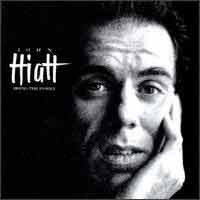 Hiatts Meisterwerk, in wenigen Tagen zusammen mit Ry Cooder, Nick Lowe und Jim Keltner eingespielt.
Absolut sparsam instrumentiert (Hiatts Stimme, Akustikgitarre und Piano, Cooders Slide, Lowes allertiefster Bass,
Keltners geniales Schlagwerk), lässt es Hiatts Lieder leuchten: "Memphis In The Meantime",
"Lipstick Sunset", "Tip Of My Tongue", "Have A Little Faith In Me" u.a.
Hiatts Meisterwerk, in wenigen Tagen zusammen mit Ry Cooder, Nick Lowe und Jim Keltner eingespielt.
Absolut sparsam instrumentiert (Hiatts Stimme, Akustikgitarre und Piano, Cooders Slide, Lowes allertiefster Bass,
Keltners geniales Schlagwerk), lässt es Hiatts Lieder leuchten: "Memphis In The Meantime",
"Lipstick Sunset", "Tip Of My Tongue", "Have A Little Faith In Me" u.a.

 Meine erste Begegnung mit einer der besten Bands der 80er. Nicht mehr ganz
so punkig wie in ihren Anfangstagen, aber stattdessen GROSSER POP!
Meine erste Begegnung mit einer der besten Bands der 80er. Nicht mehr ganz
so punkig wie in ihren Anfangstagen, aber stattdessen GROSSER POP! Das bislang letzte Soloalbum des Meisters der Slidegitarre, das kein
Filmsoundtrack ist und in dem es um SONGS geht! Wie unser neuer Gitarrist
Das bislang letzte Soloalbum des Meisters der Slidegitarre, das kein
Filmsoundtrack ist und in dem es um SONGS geht! Wie unser neuer Gitarrist